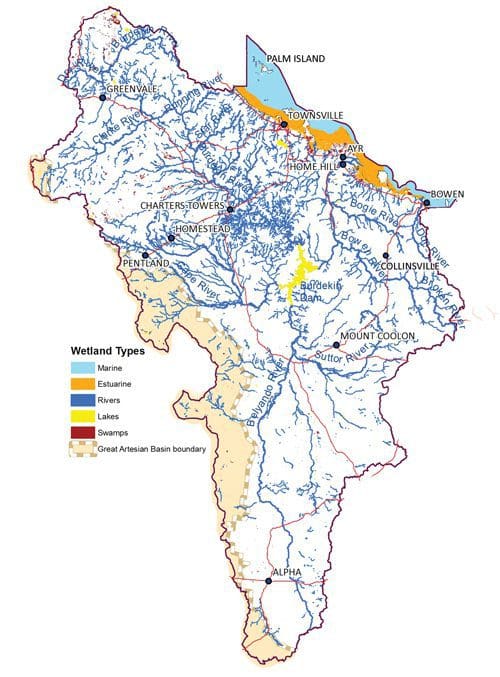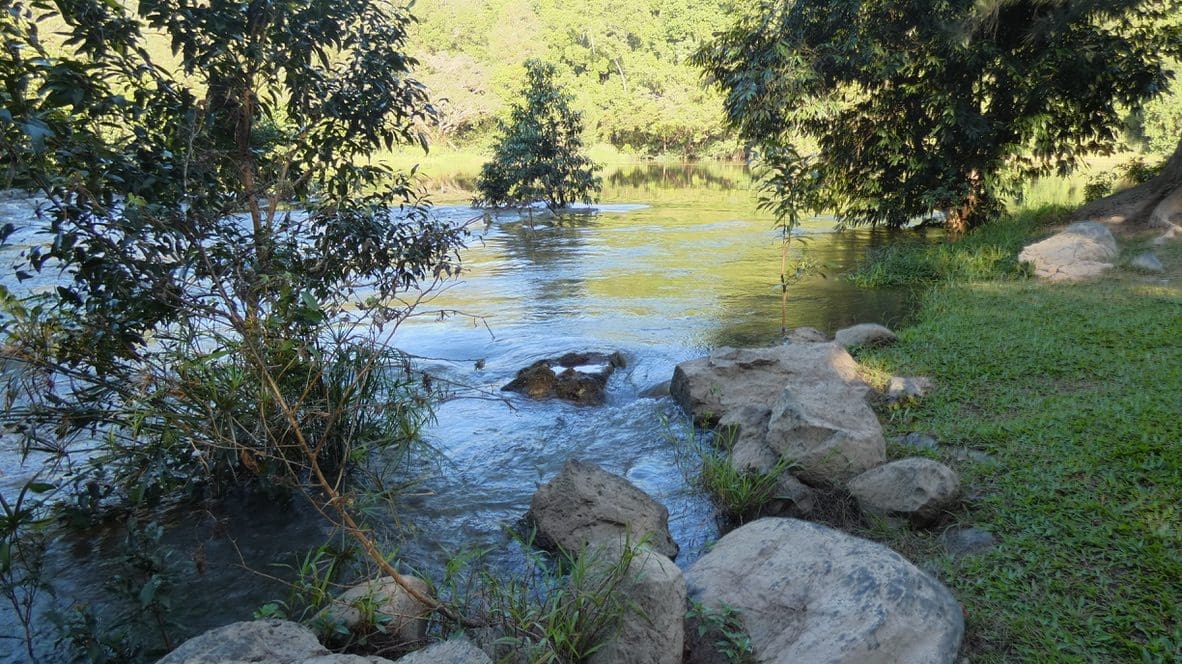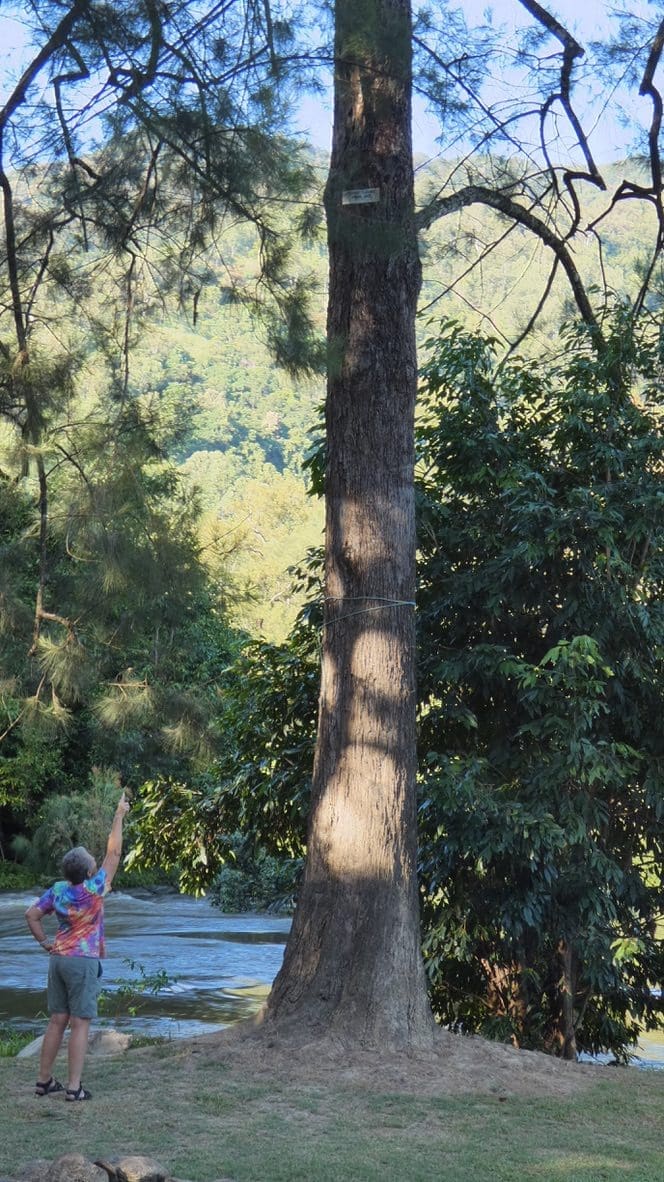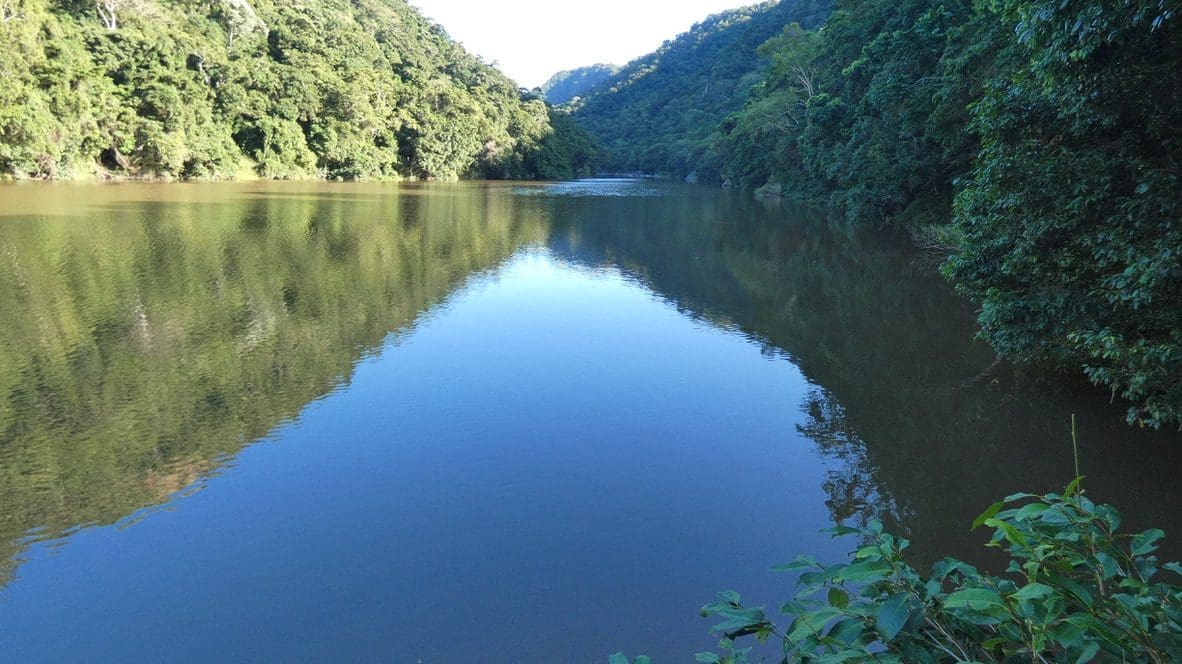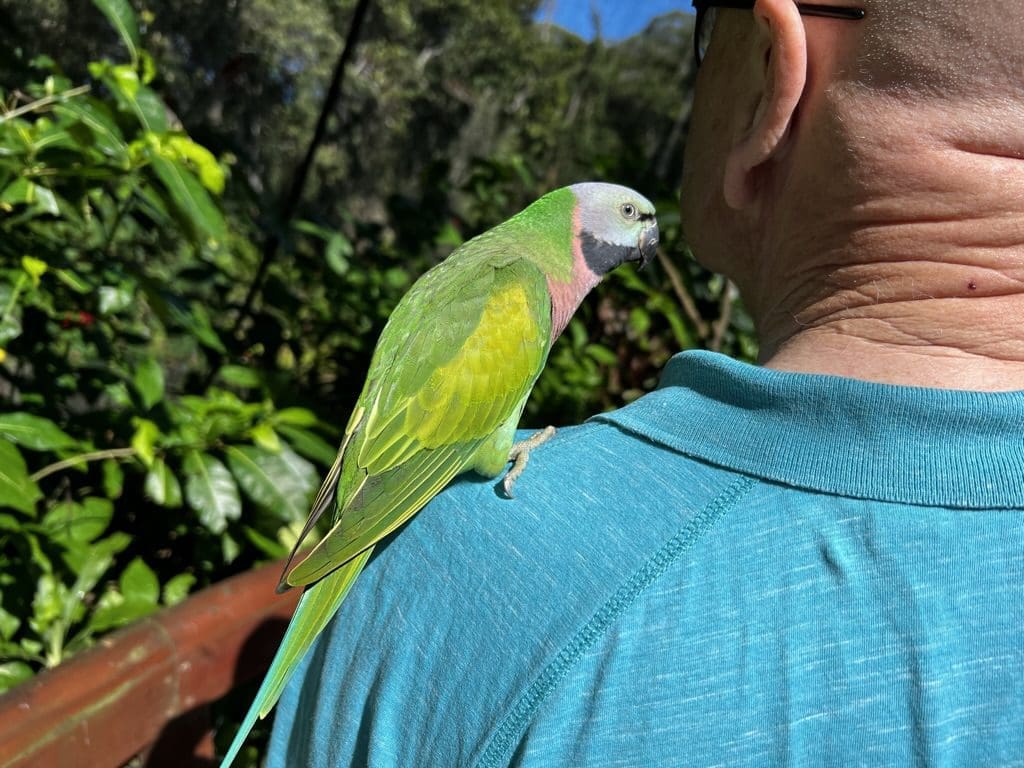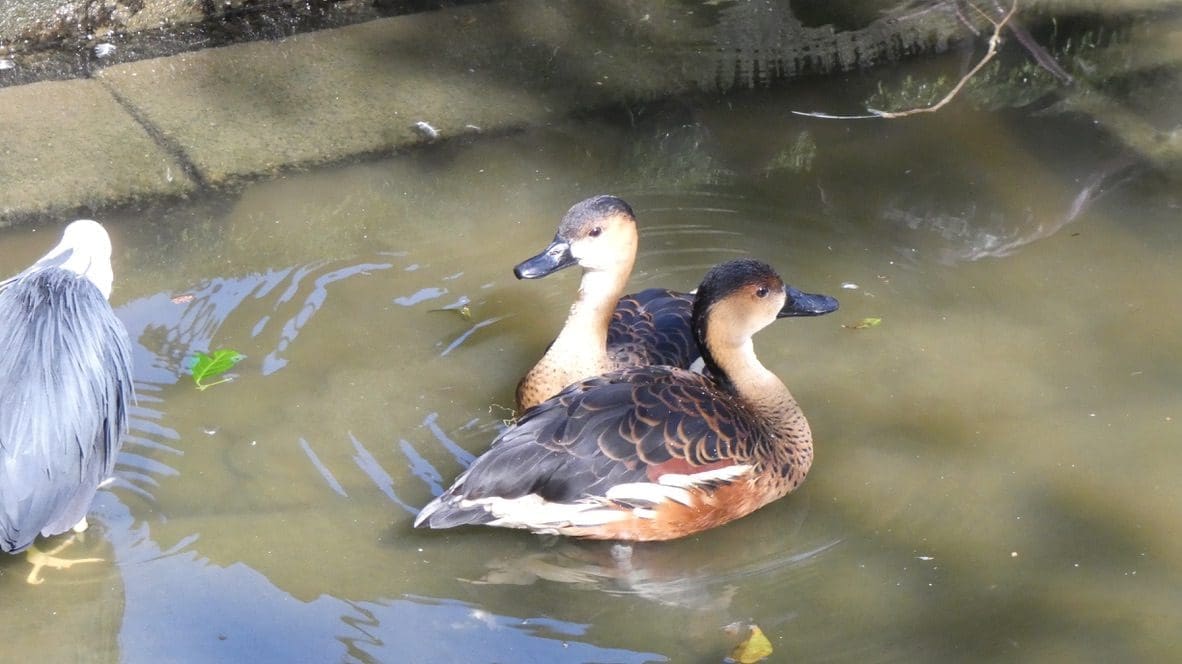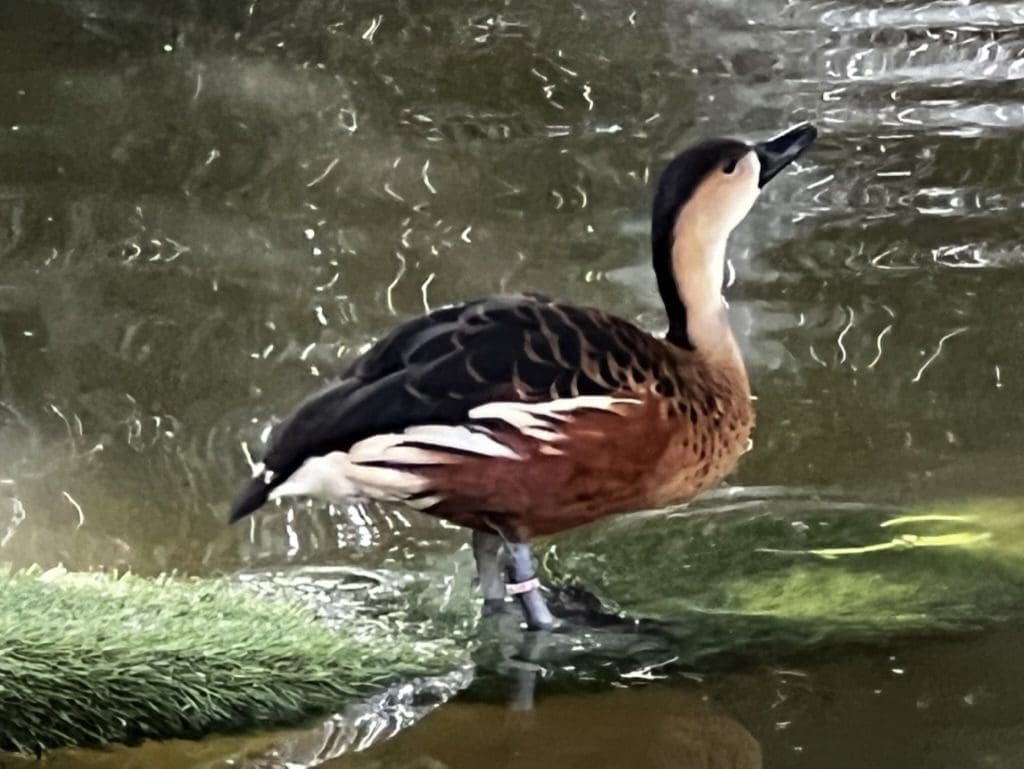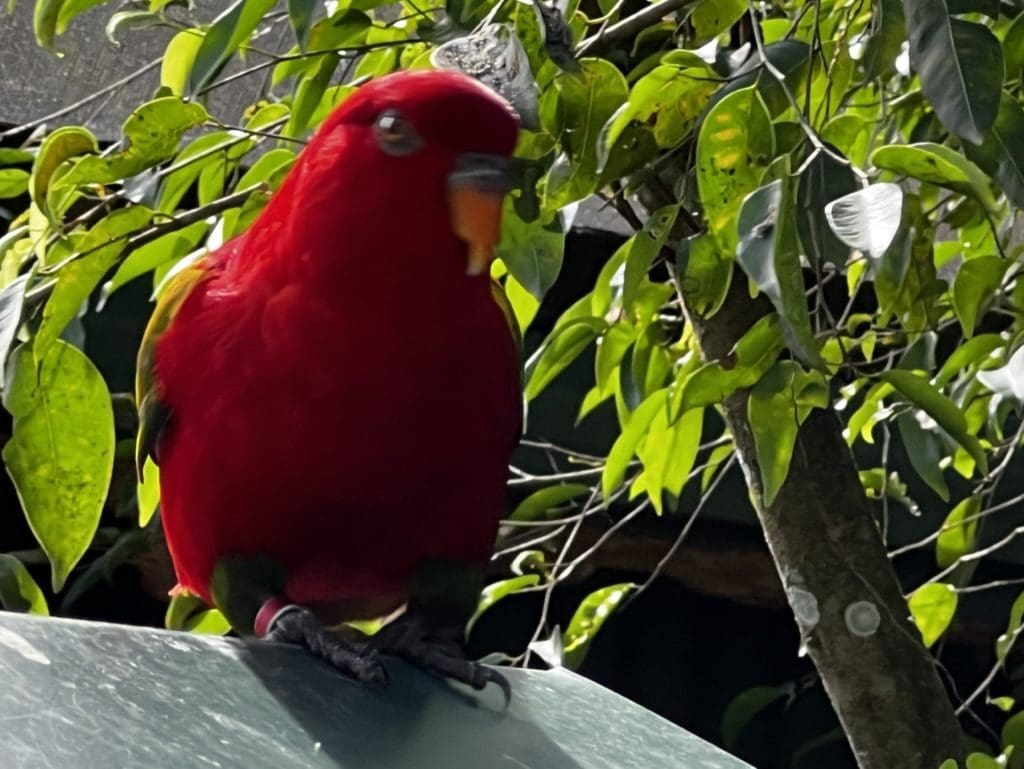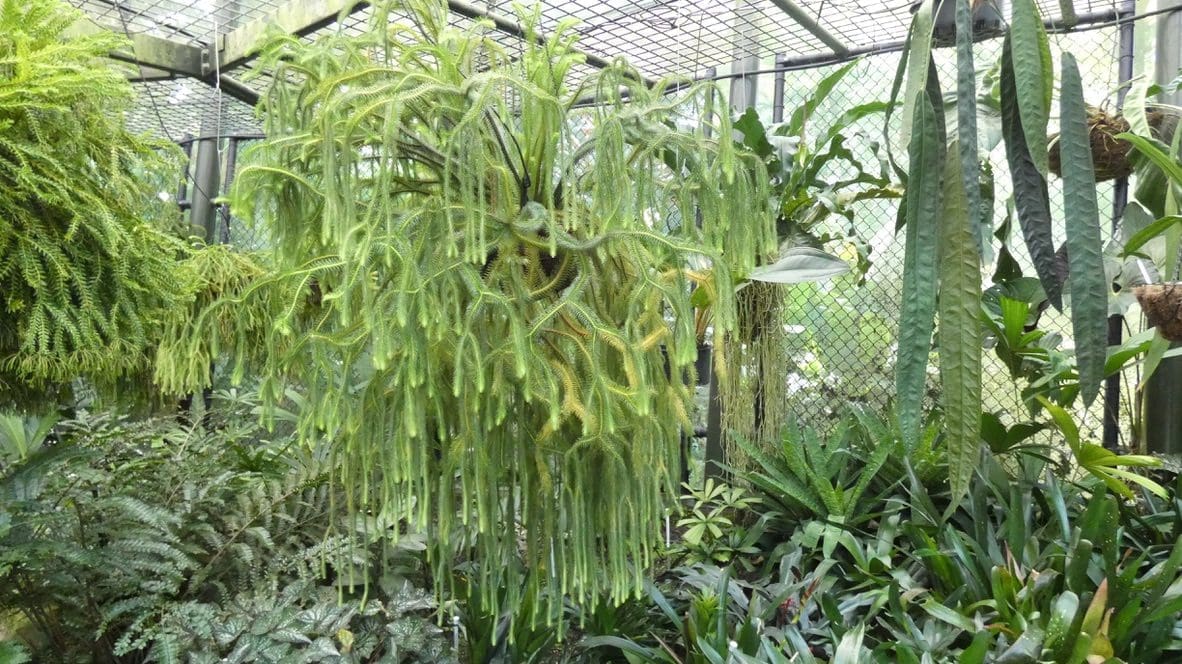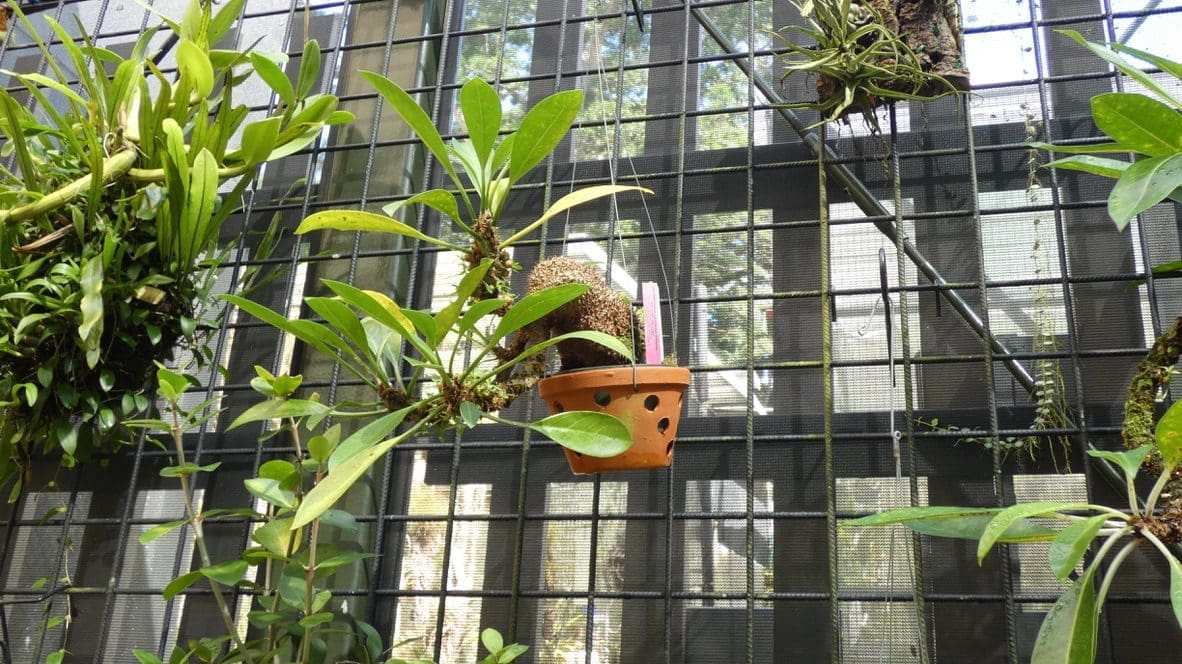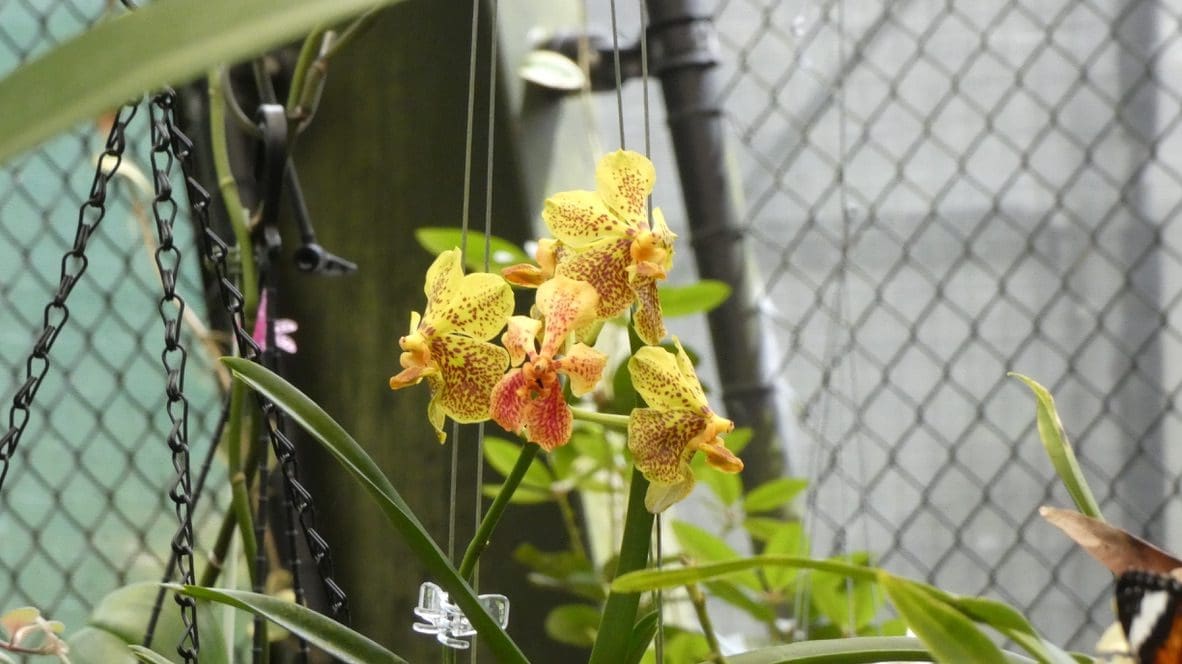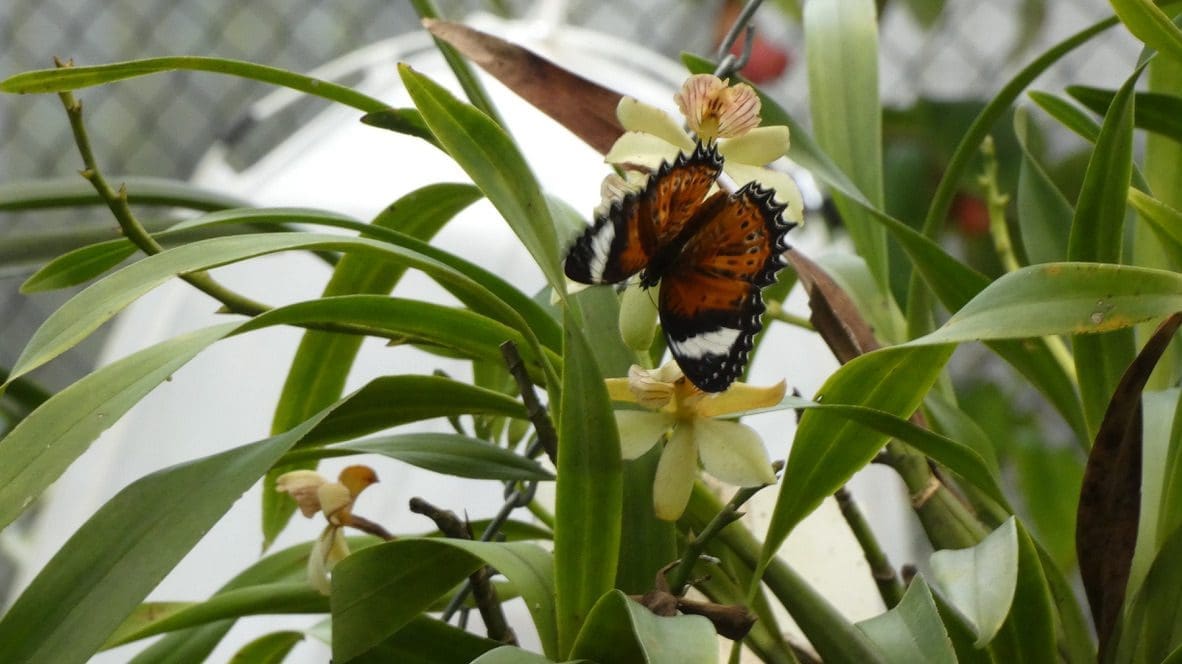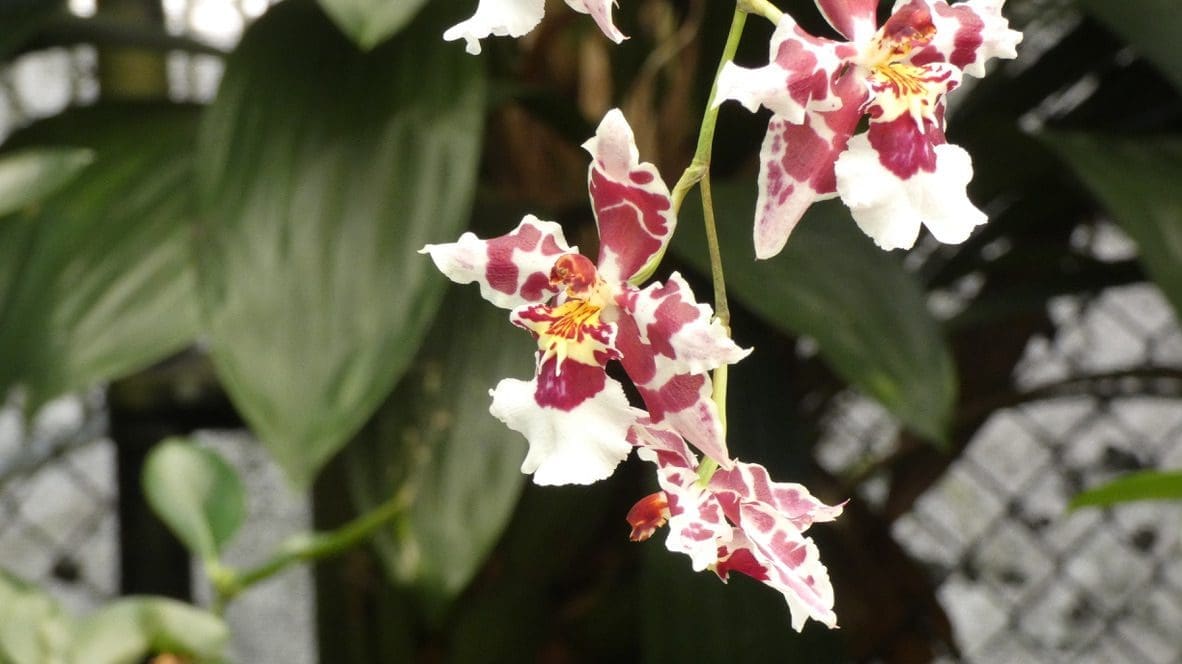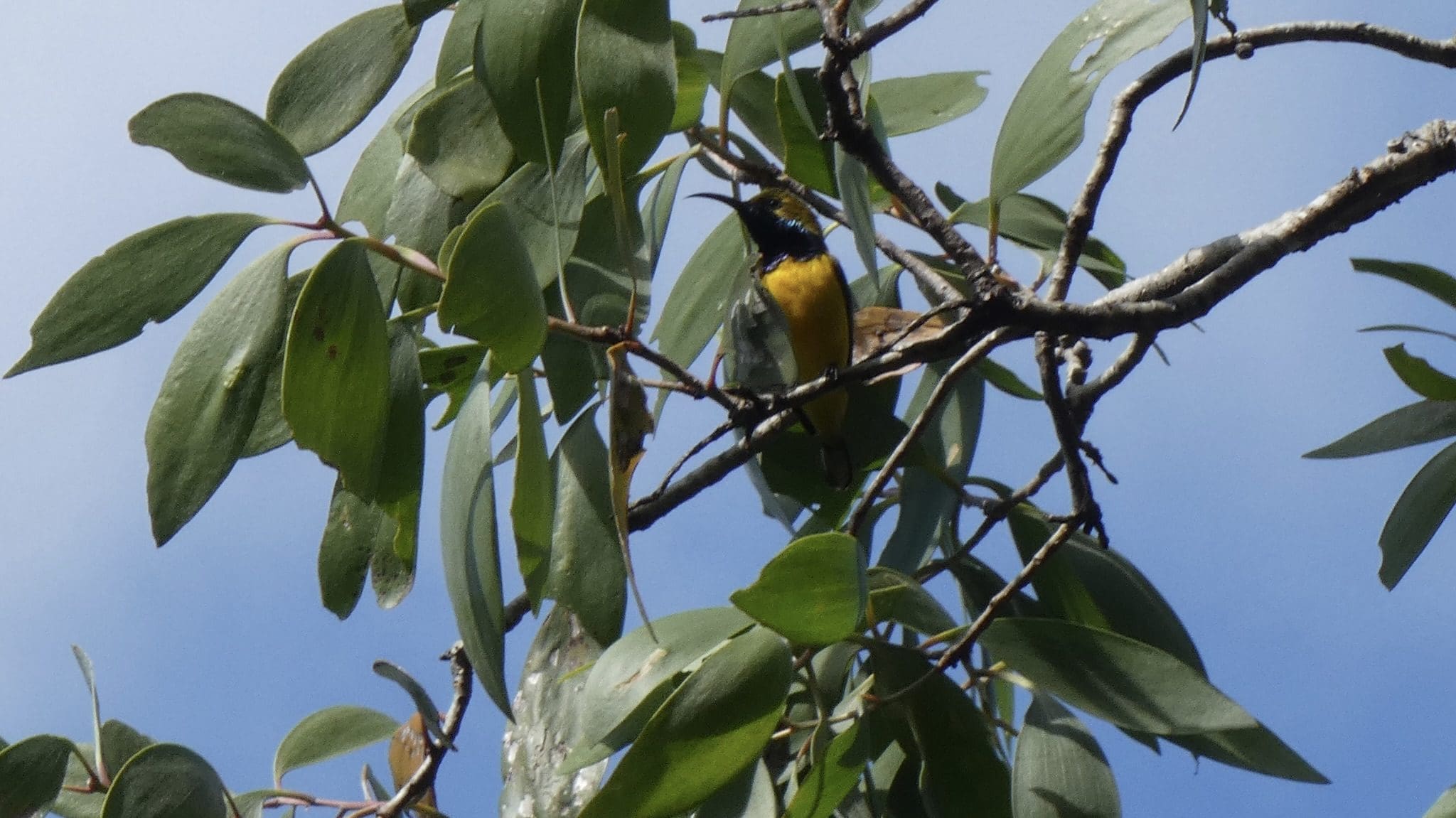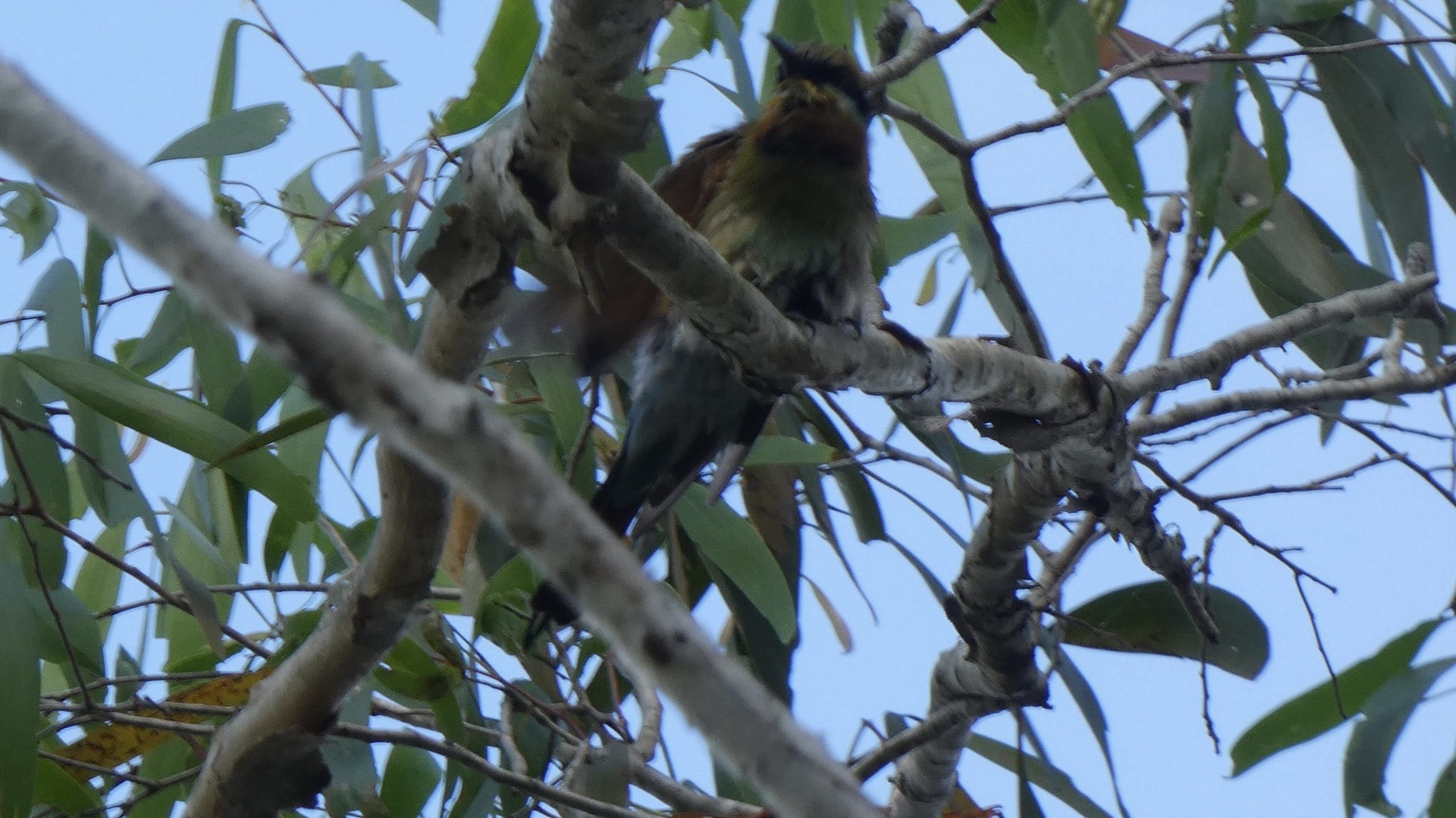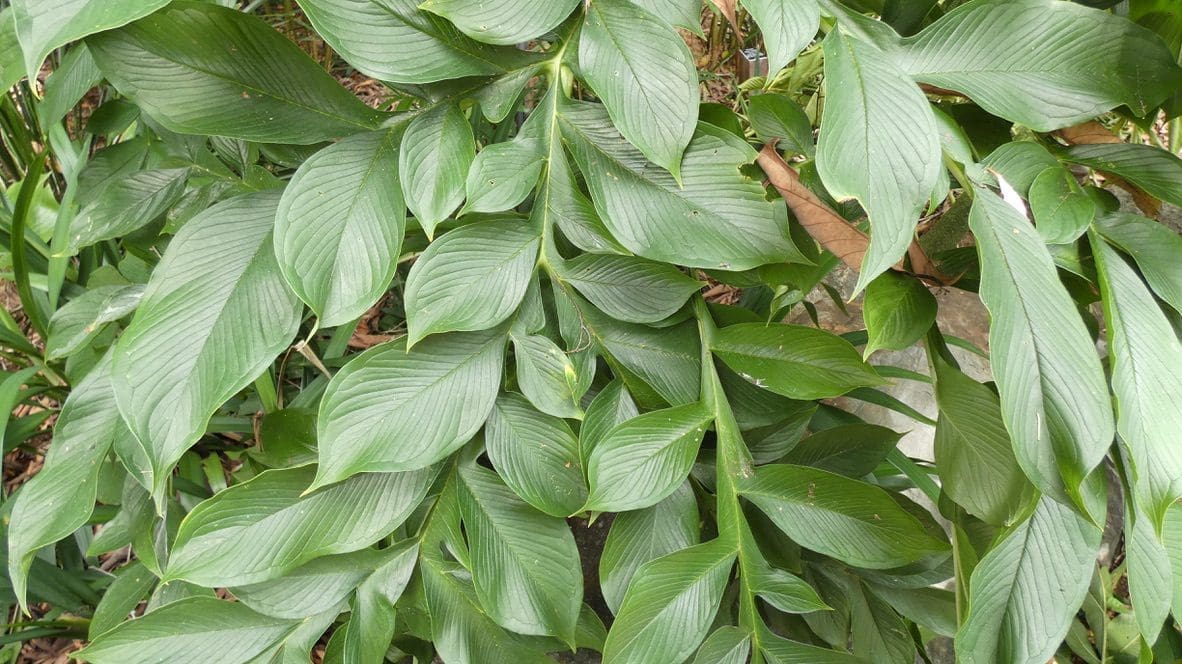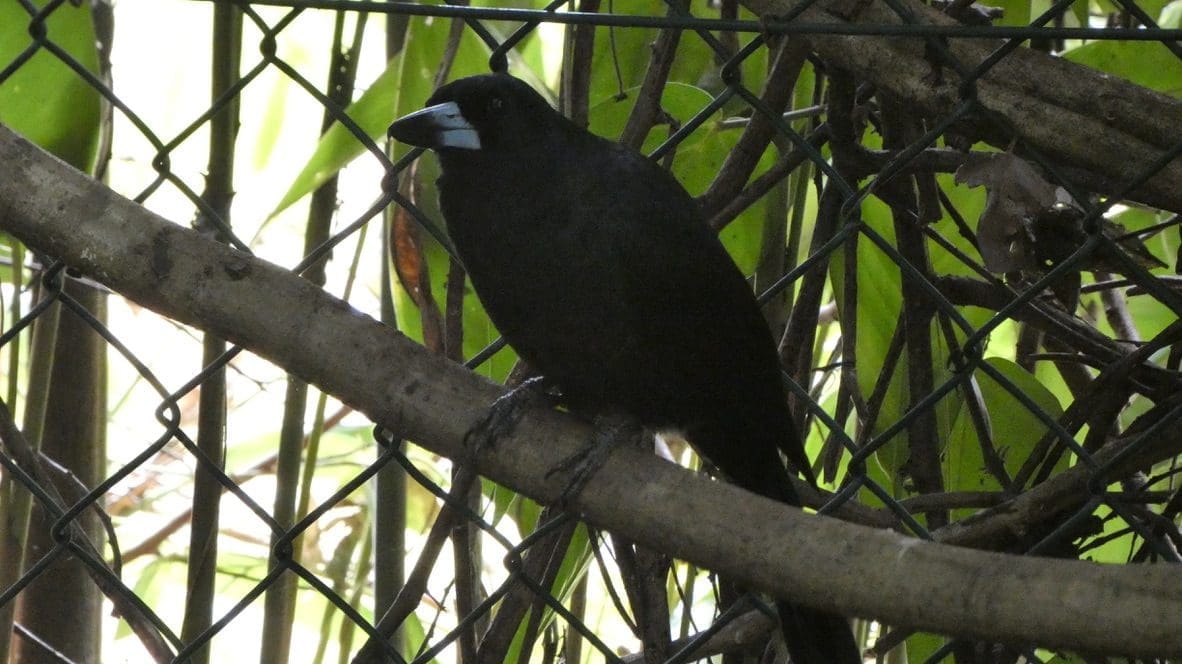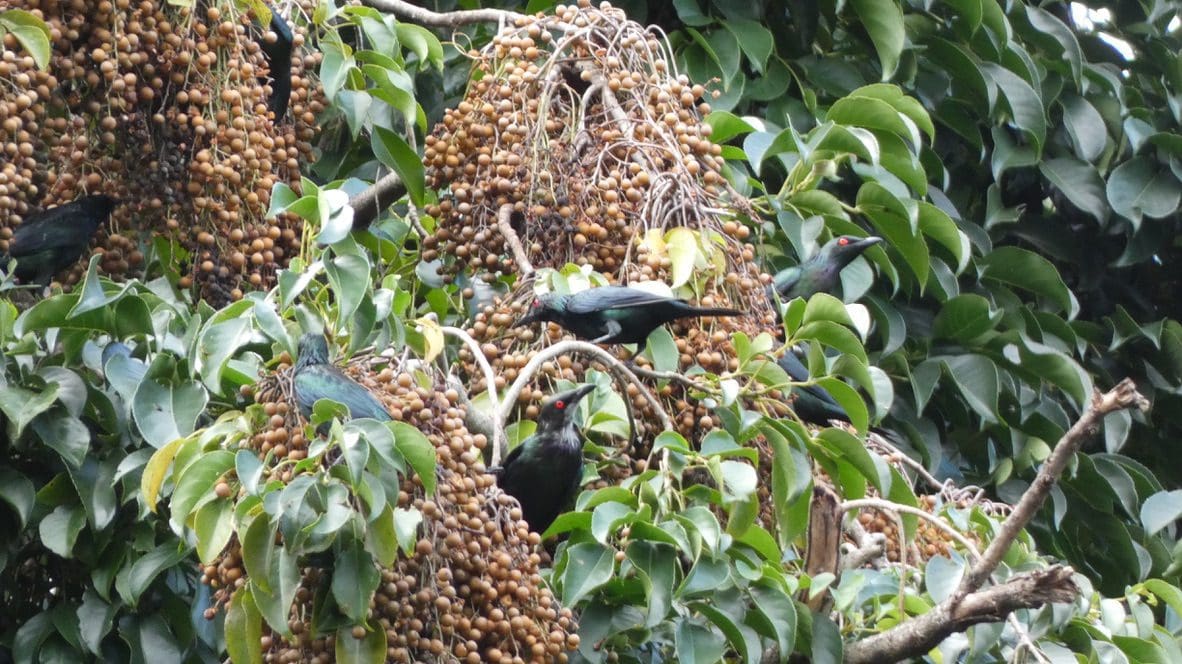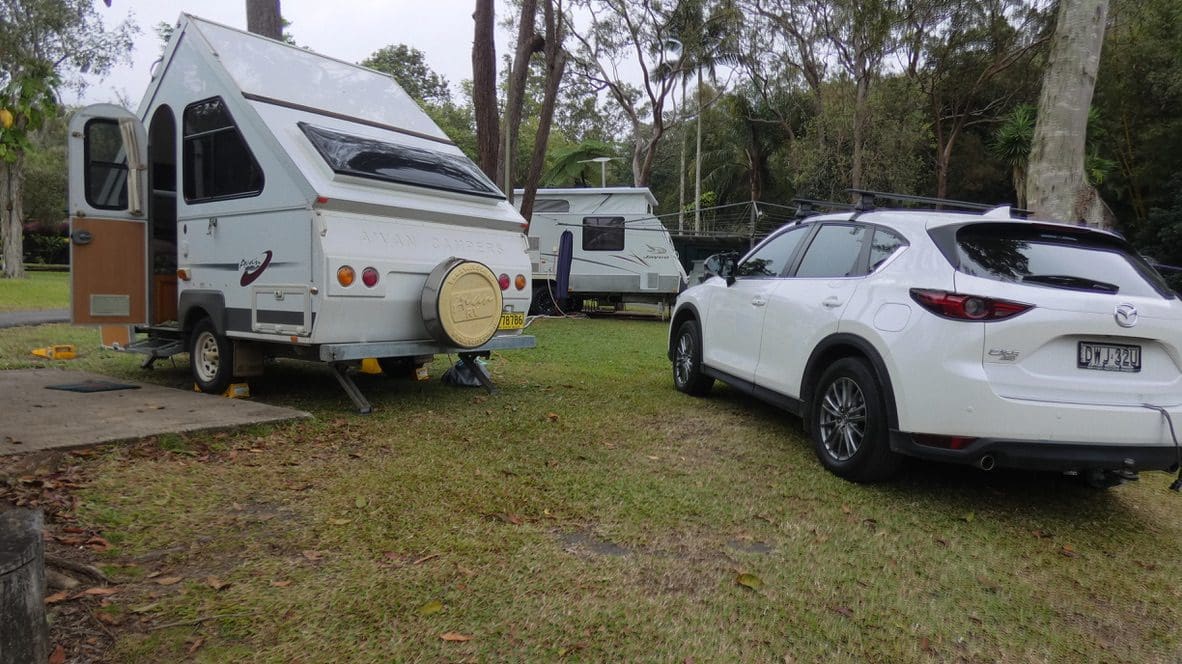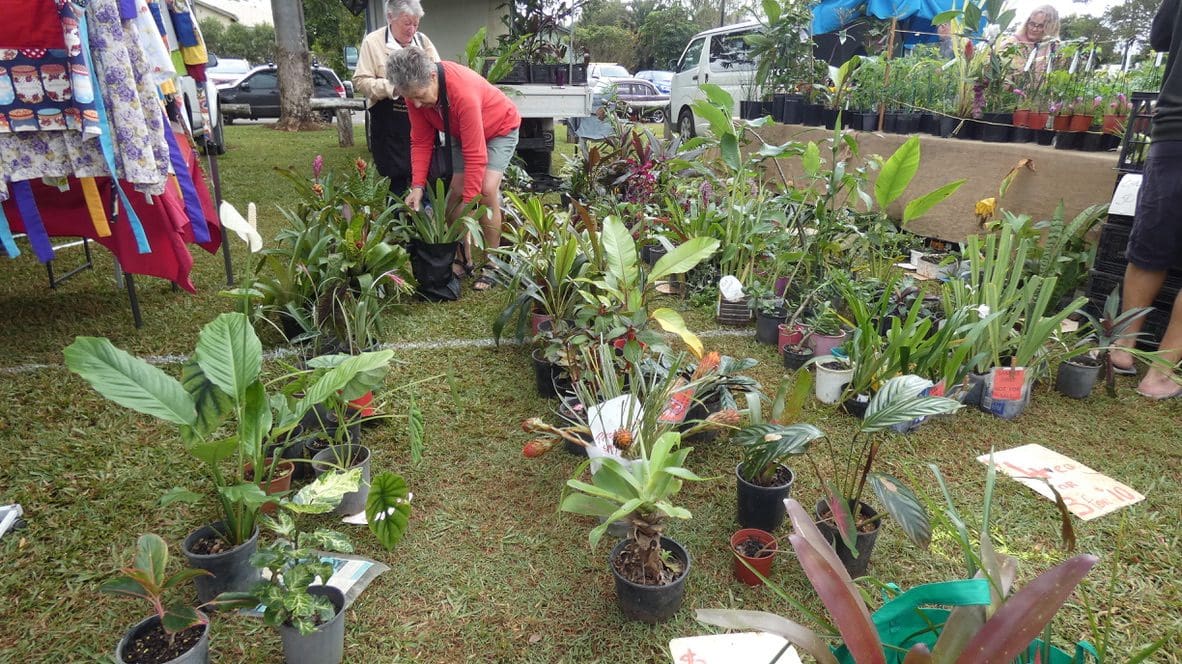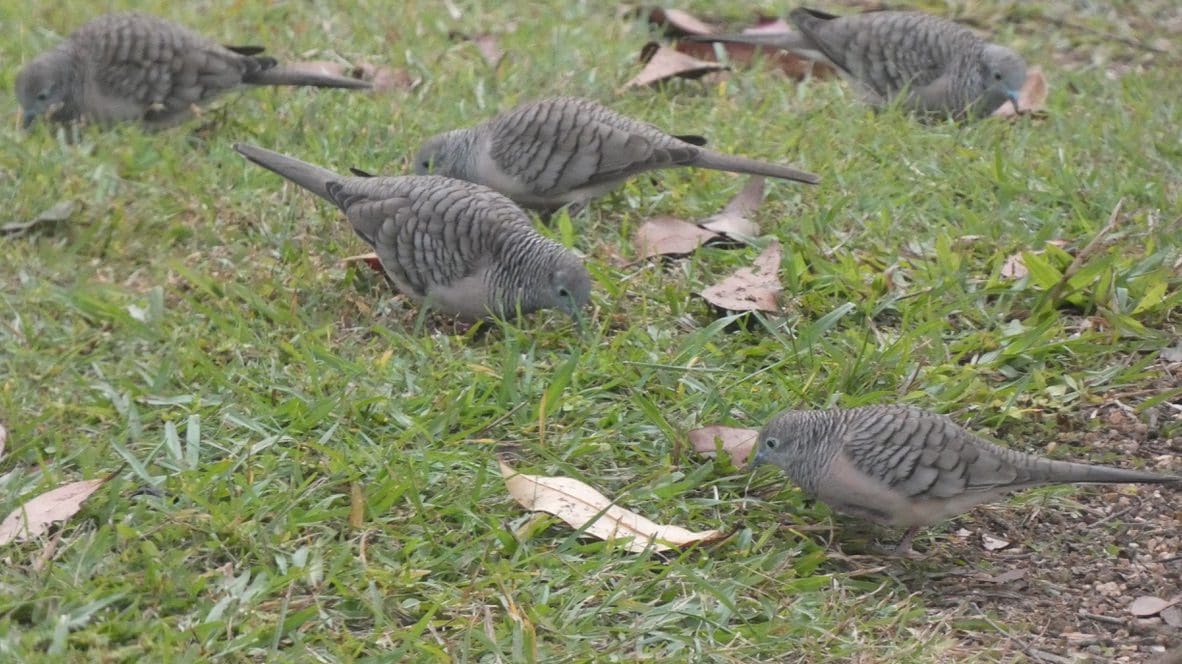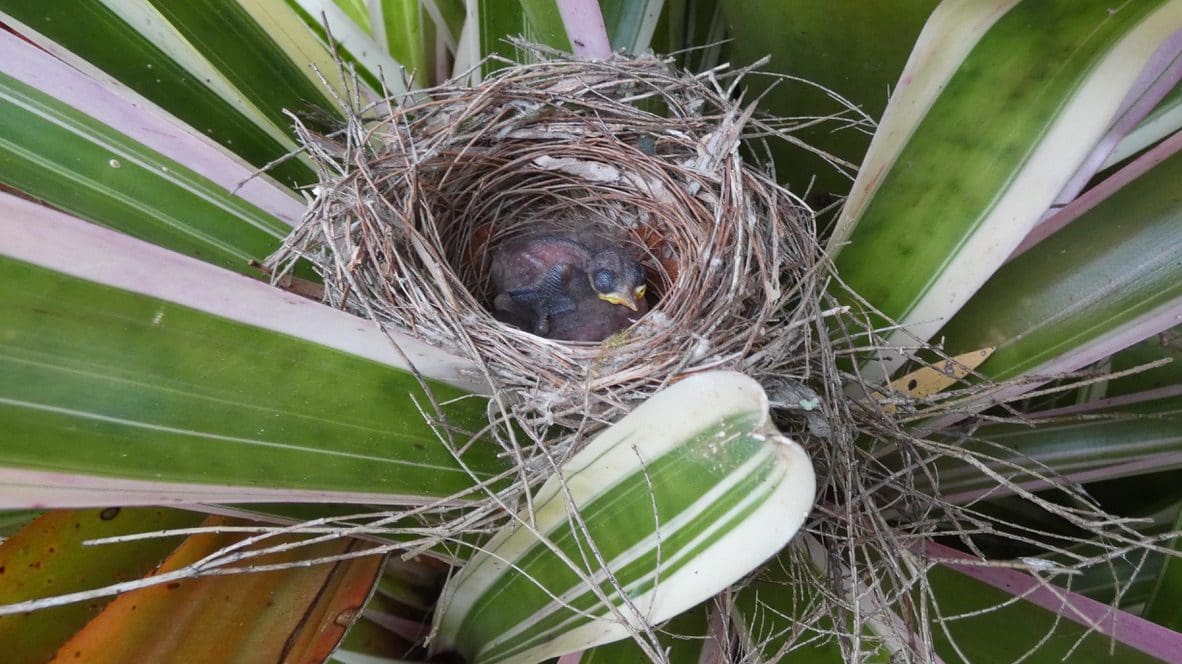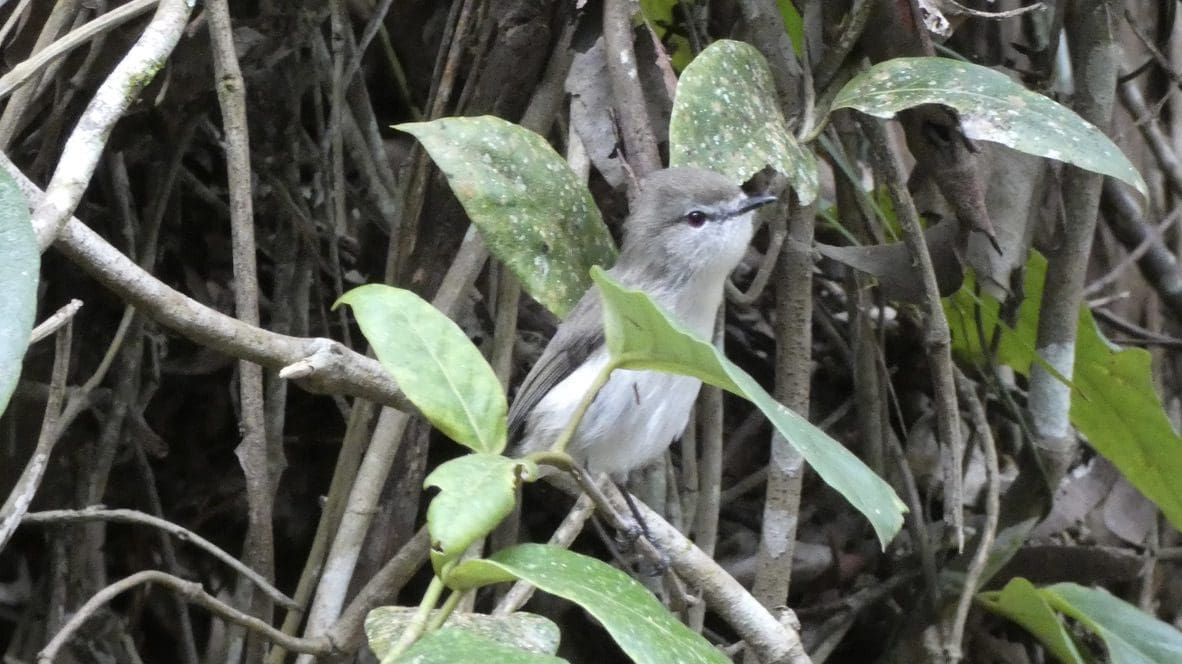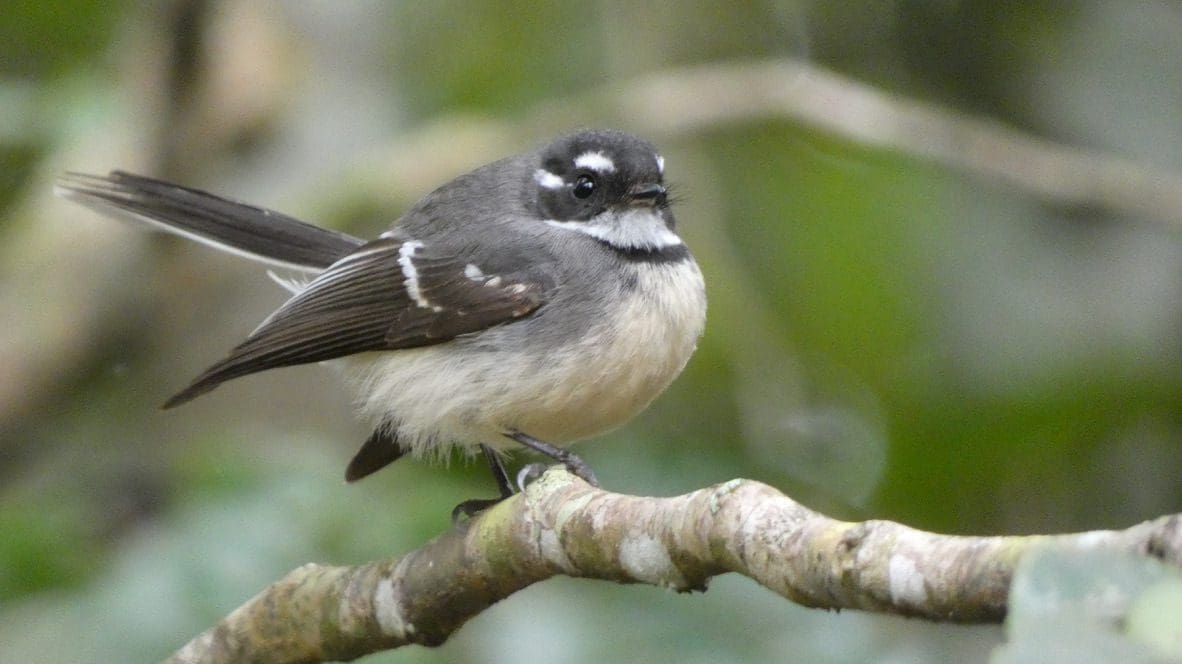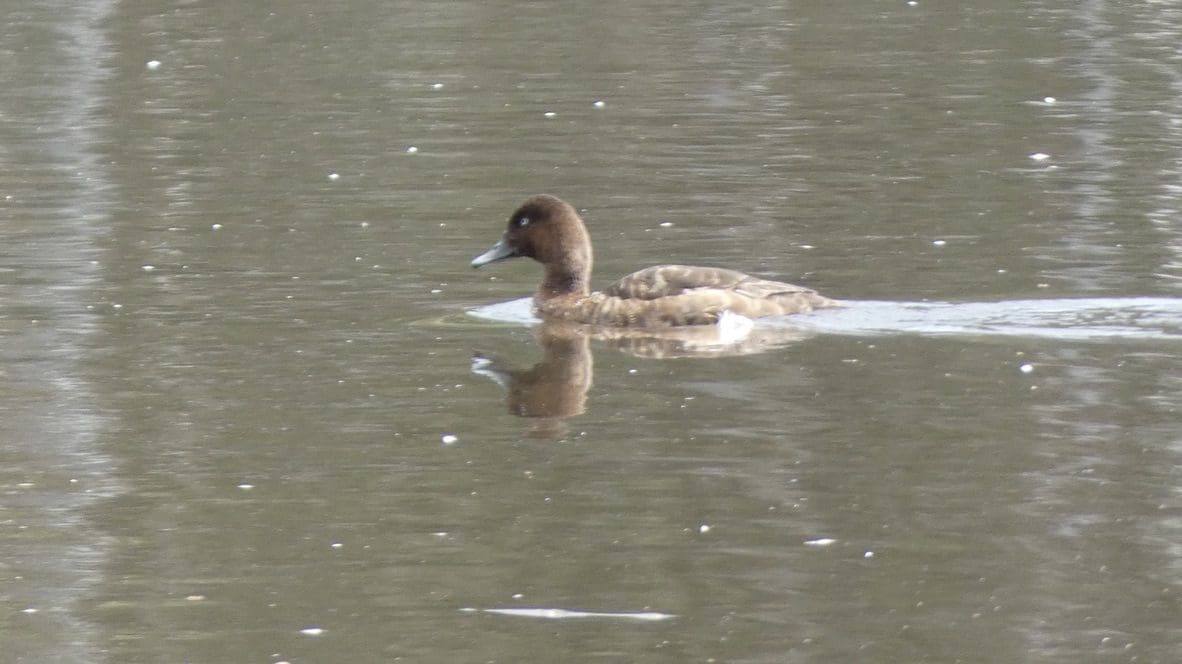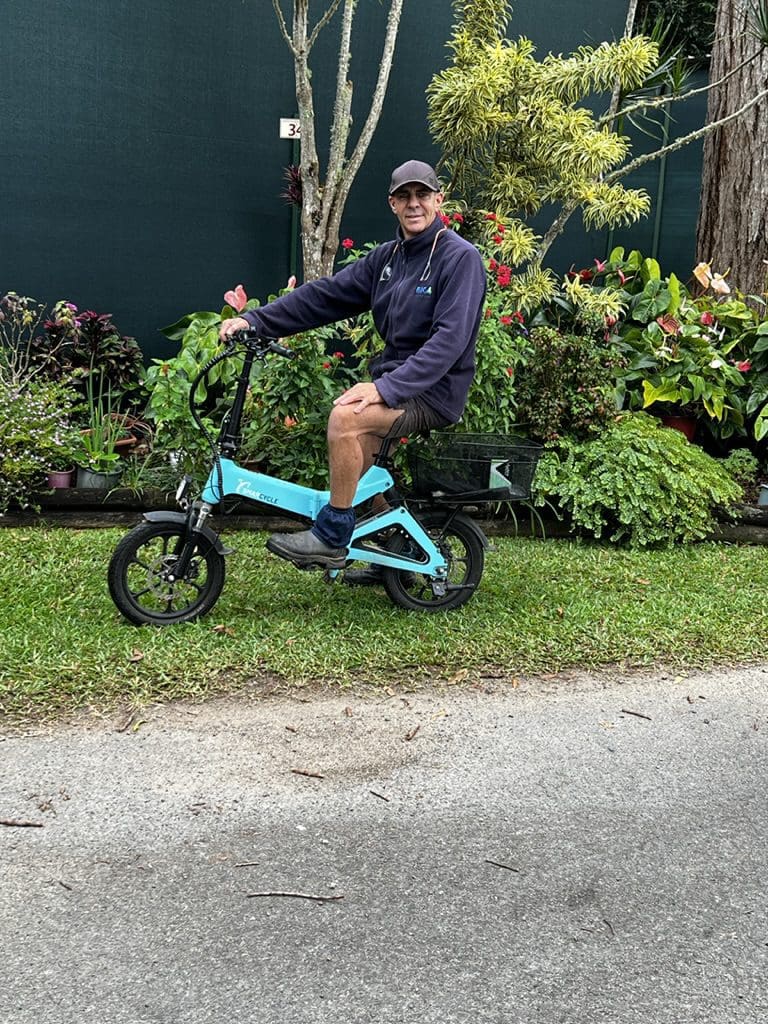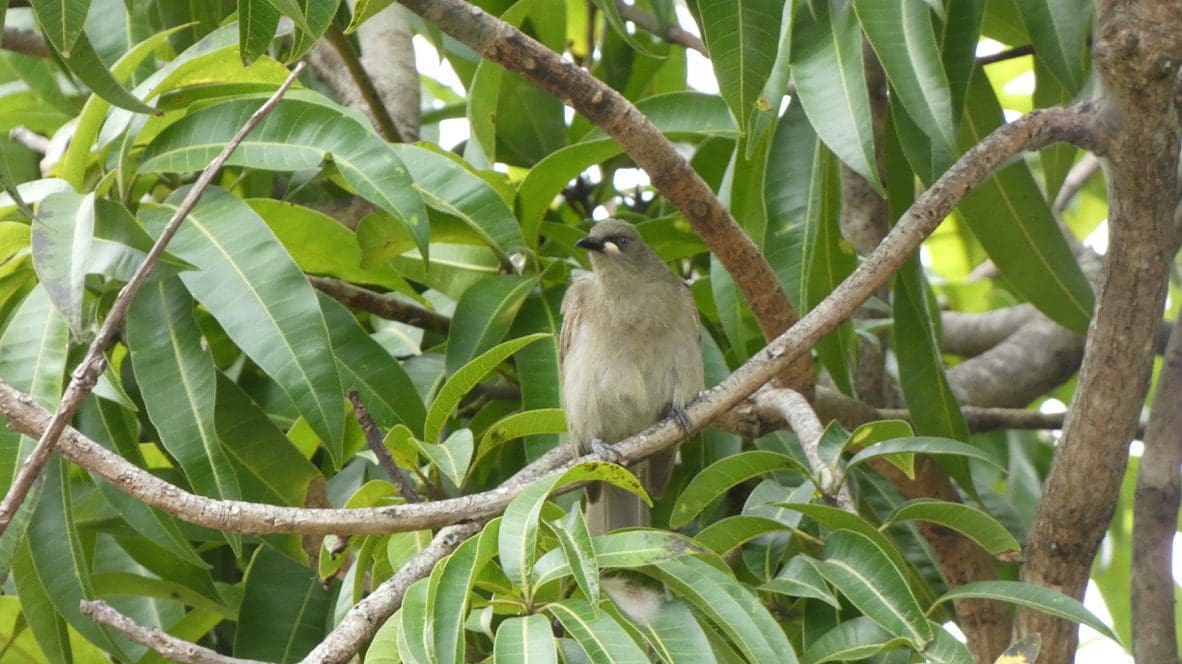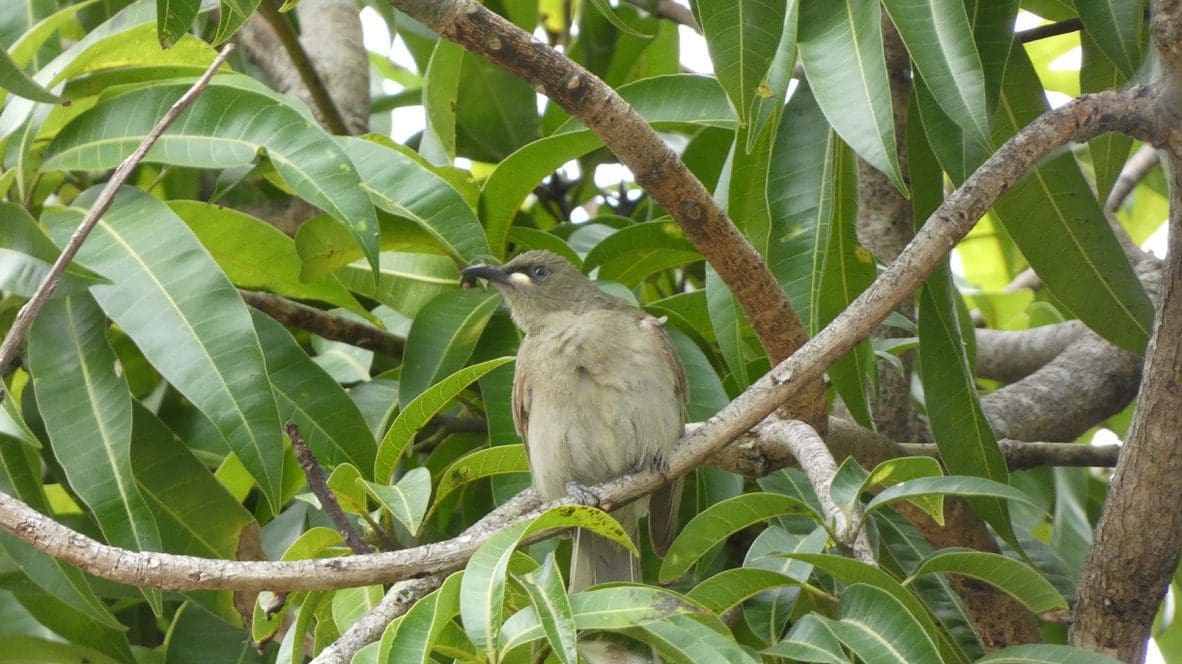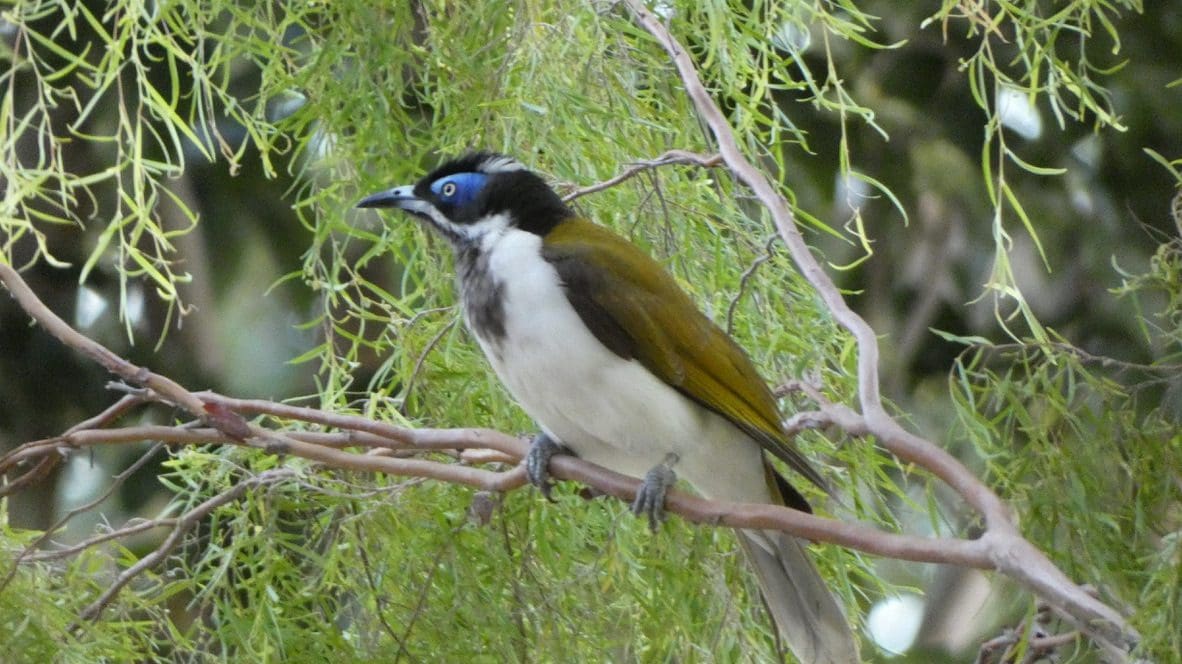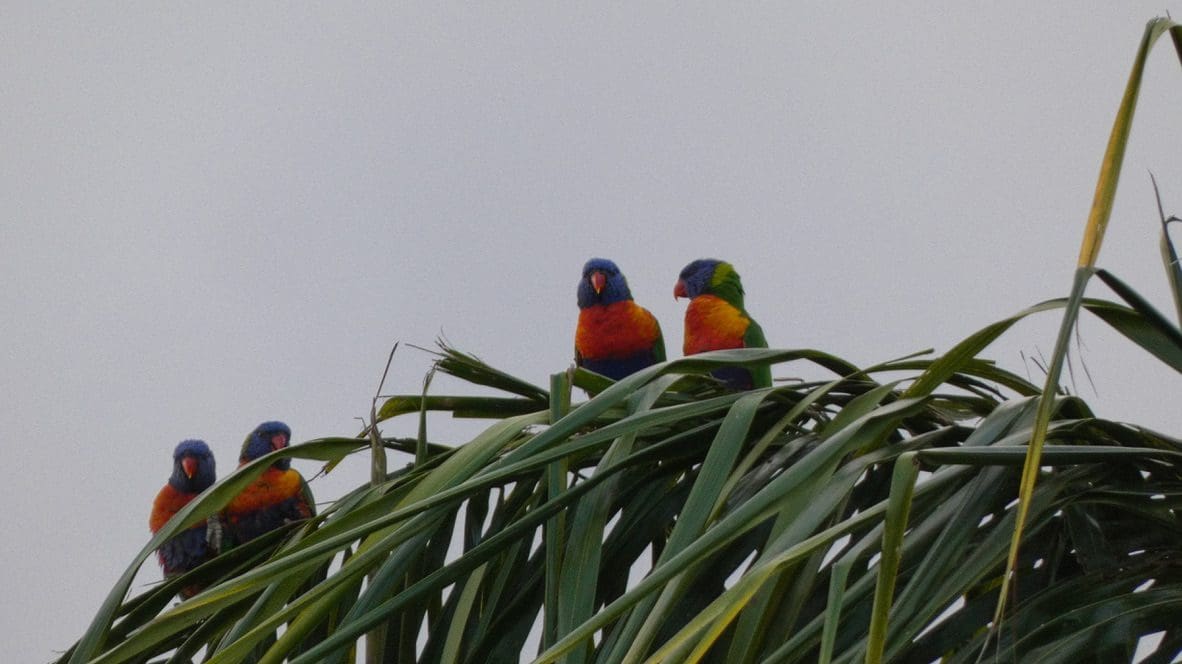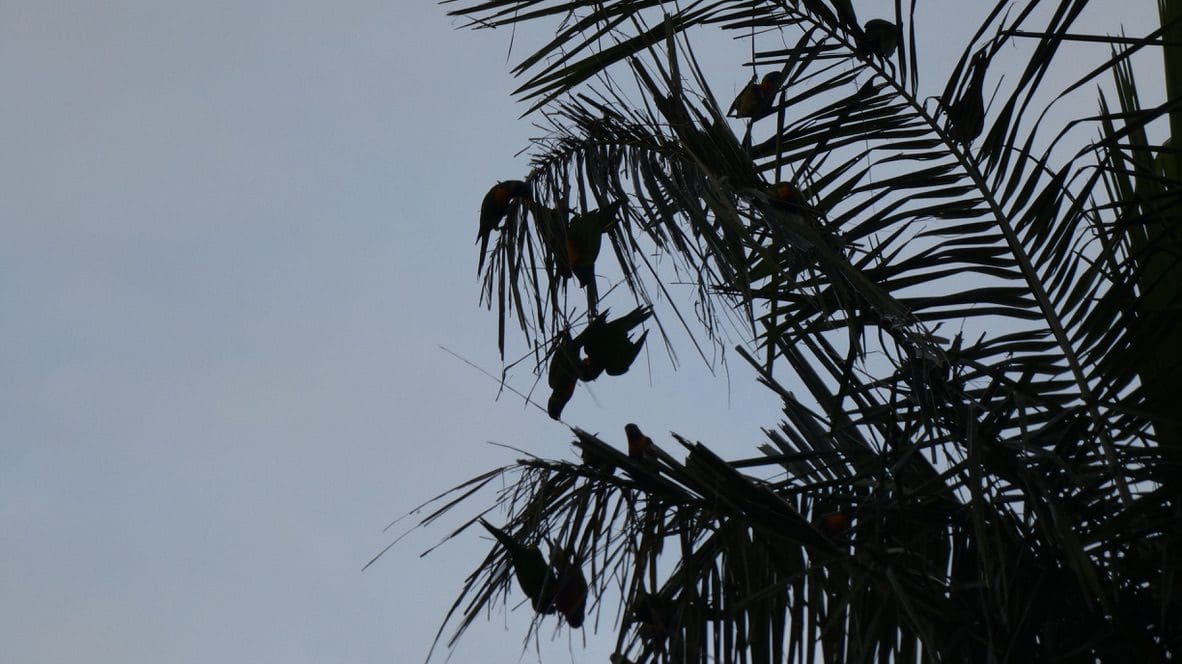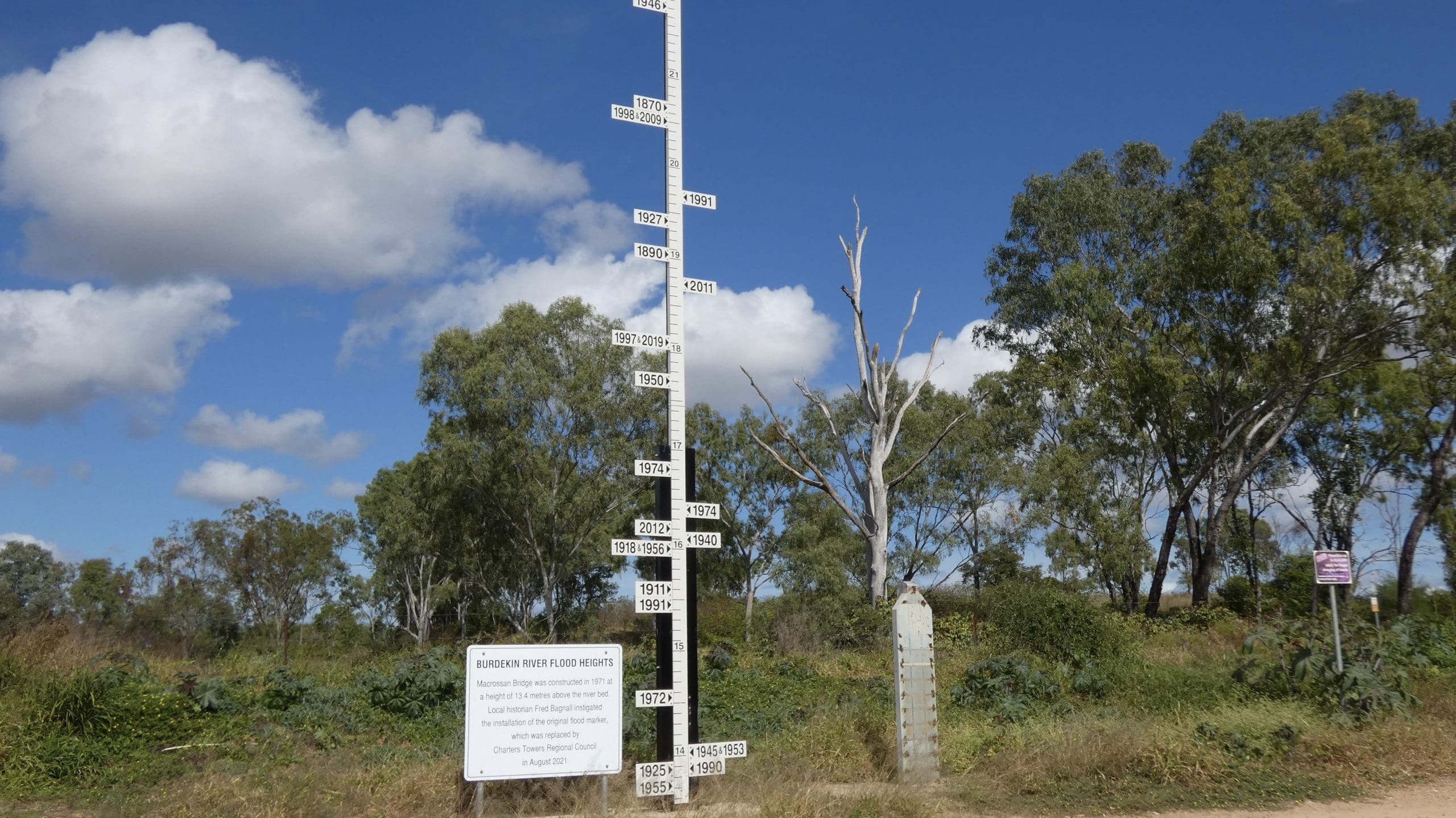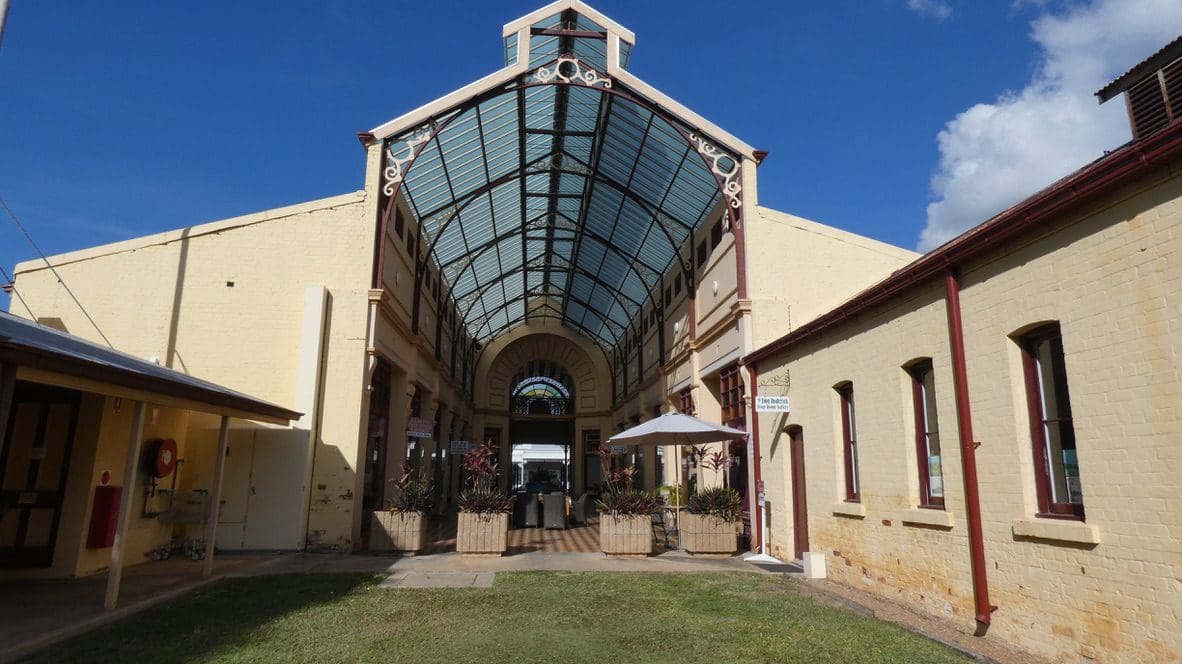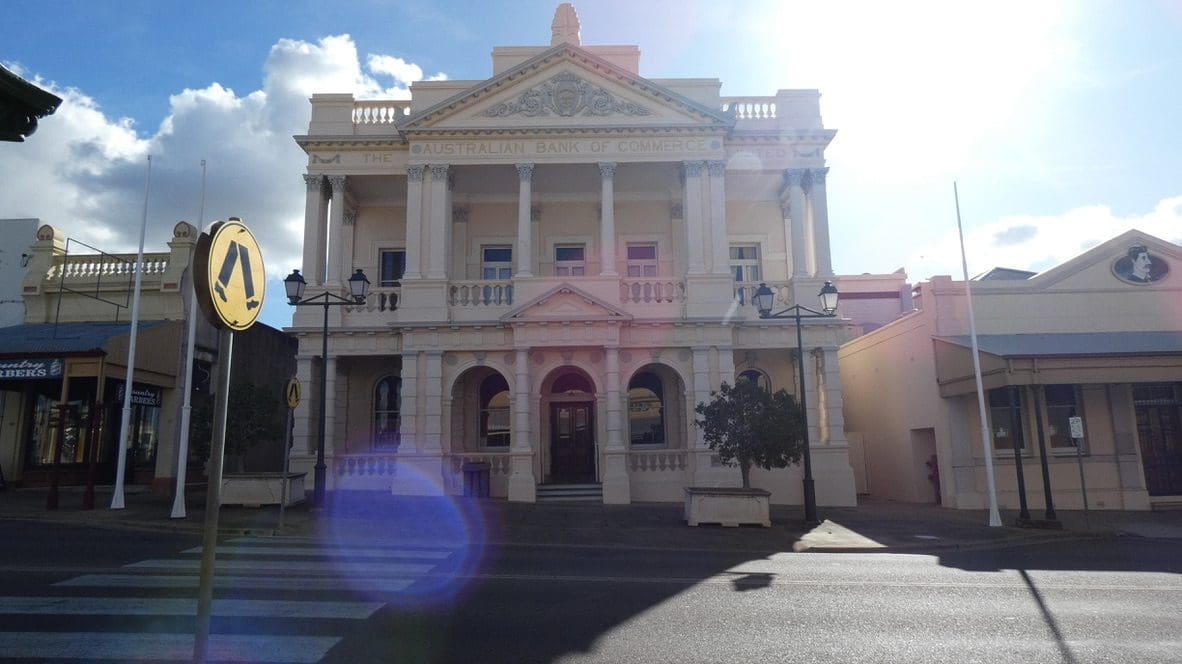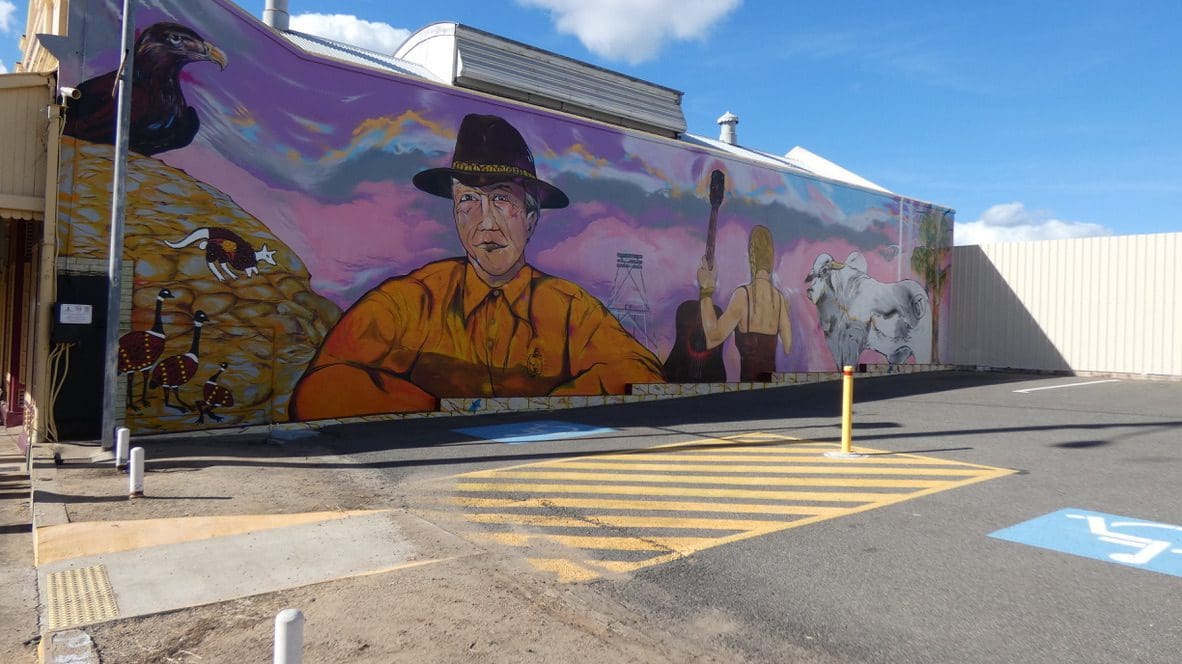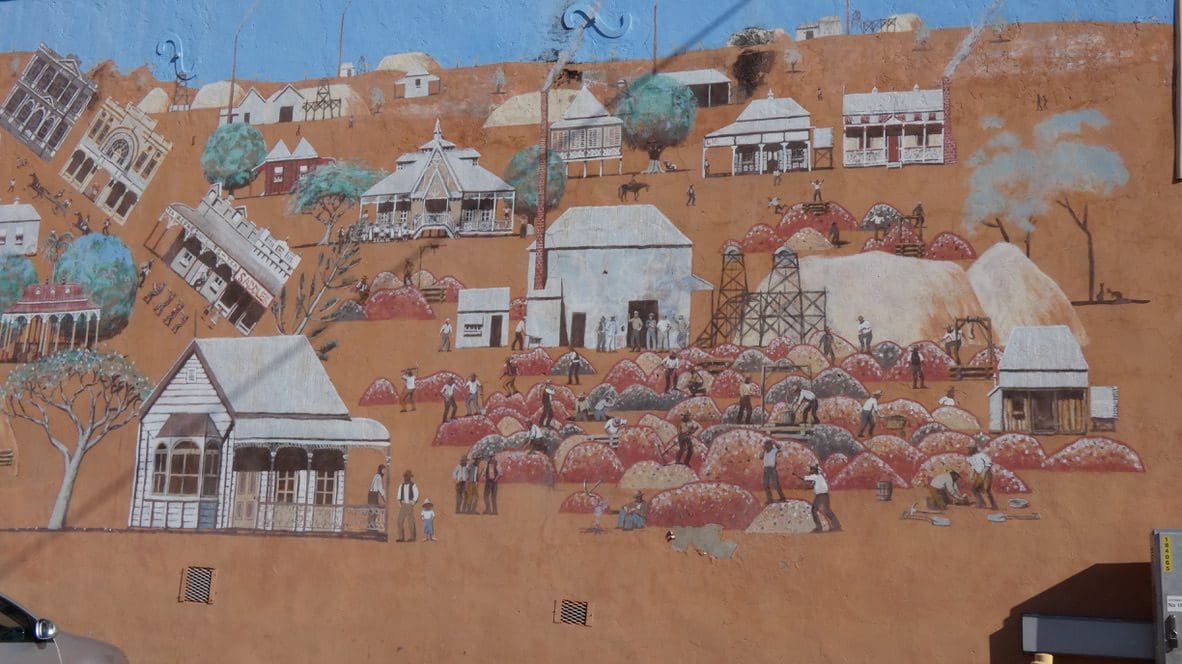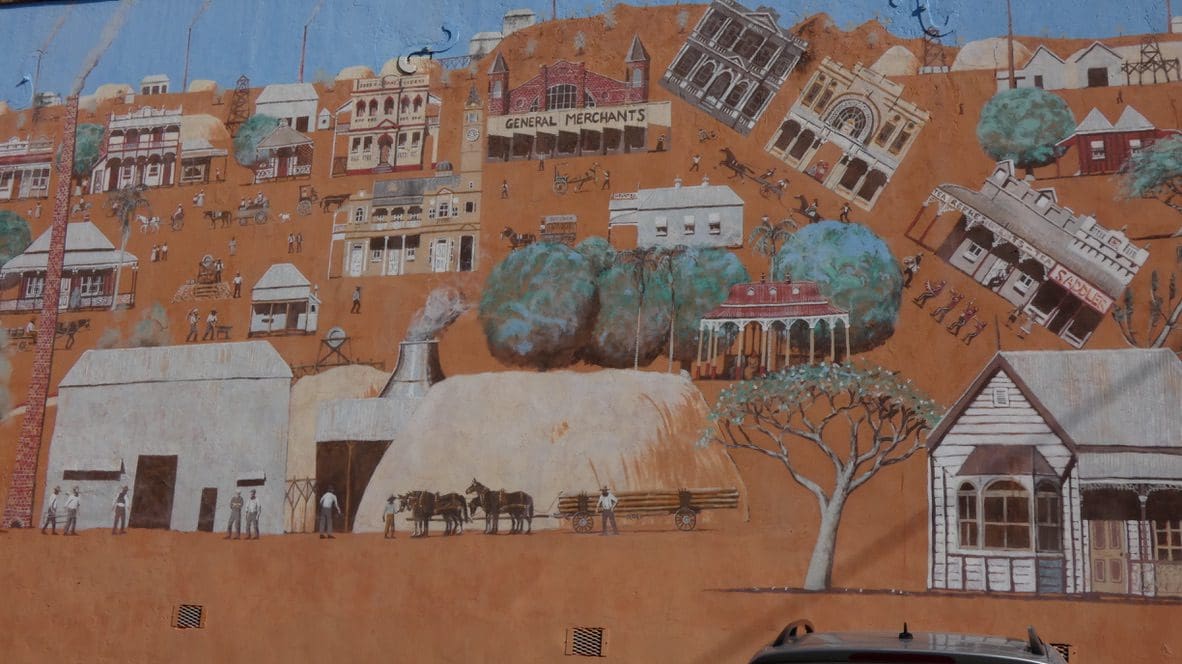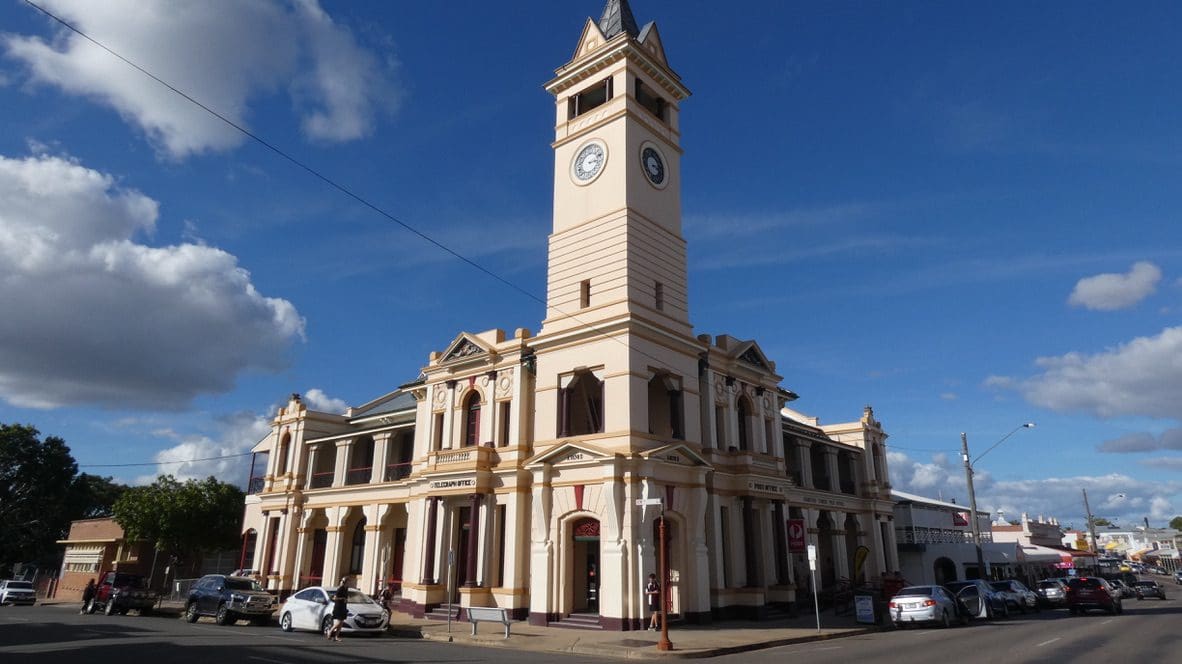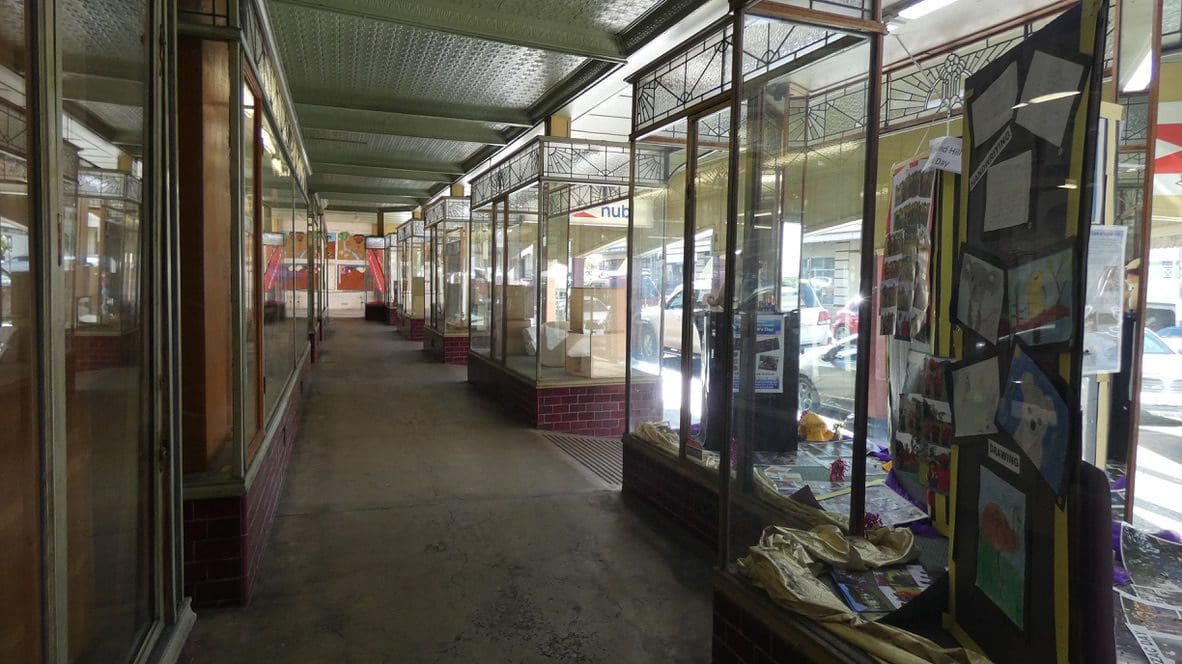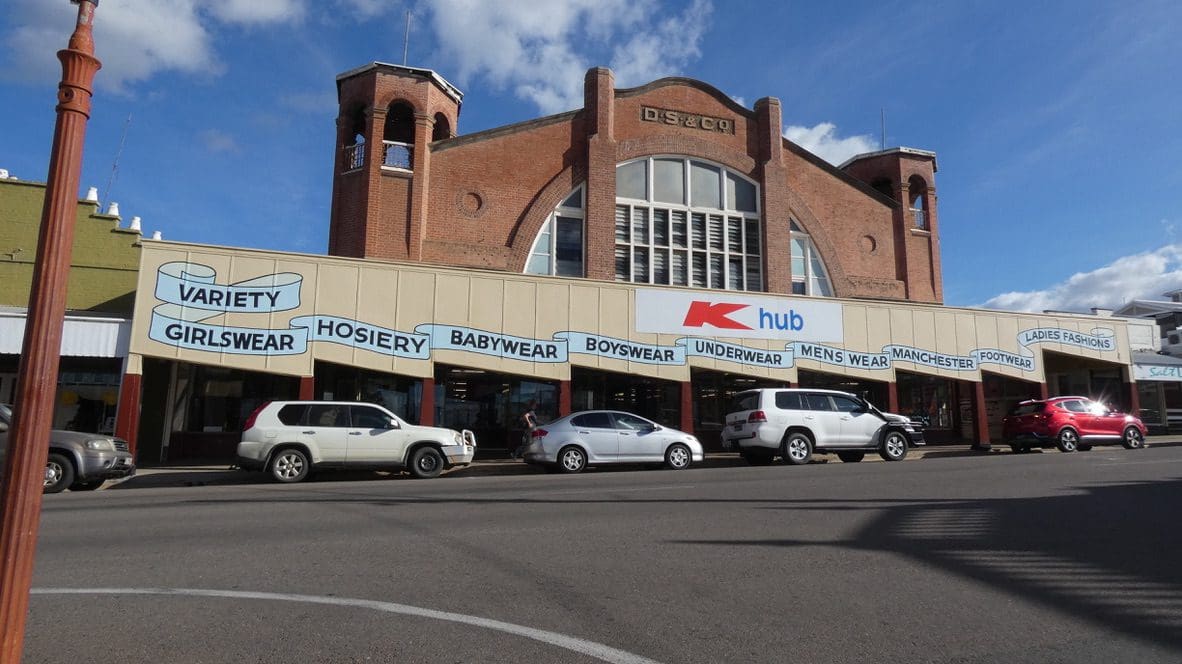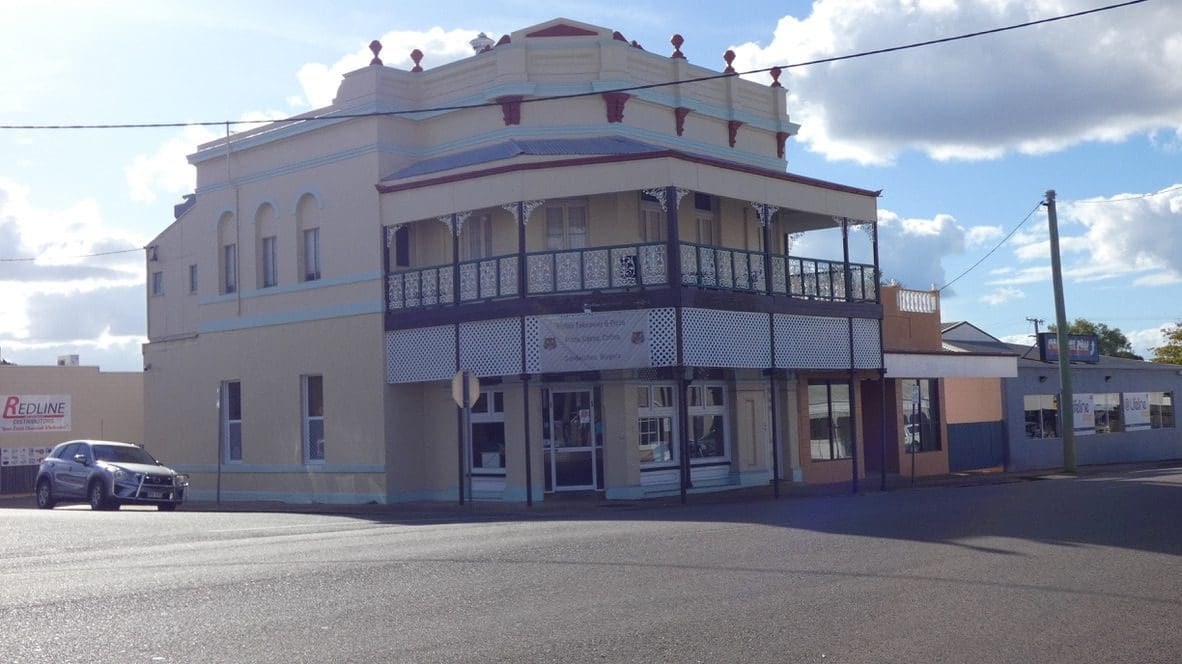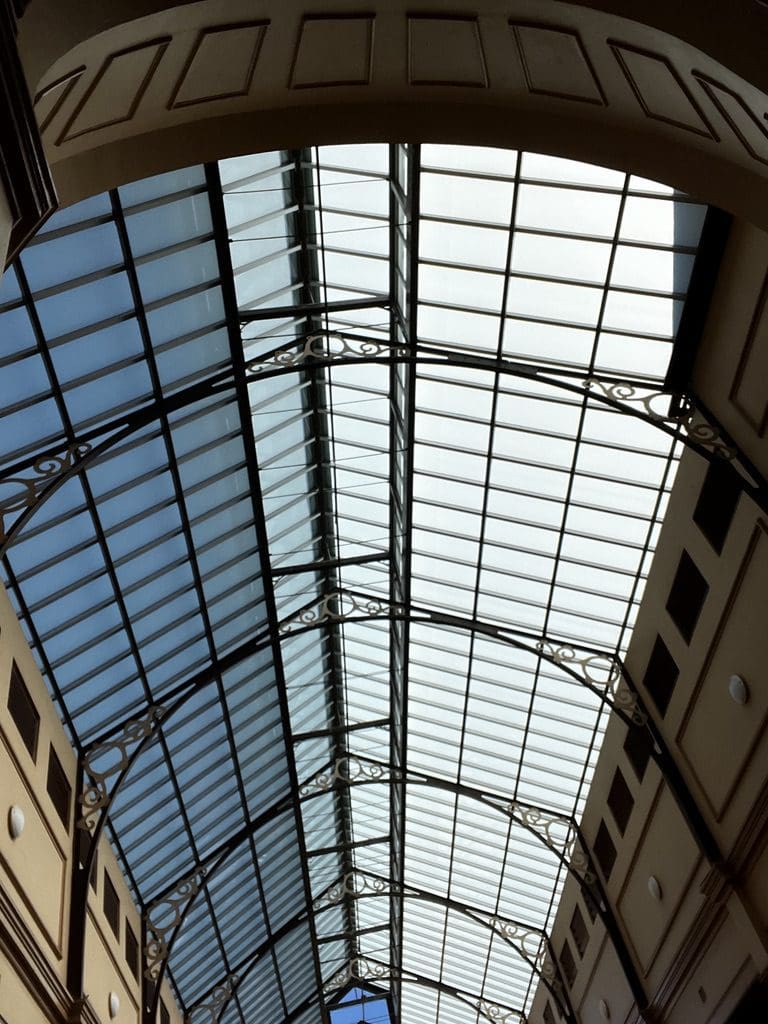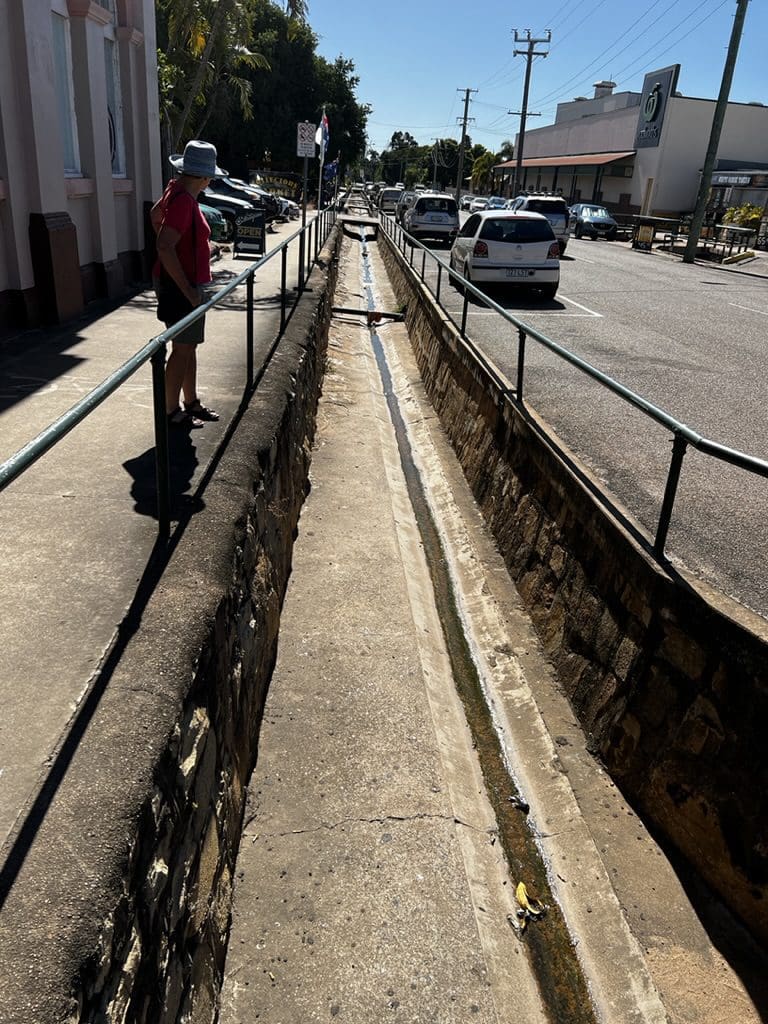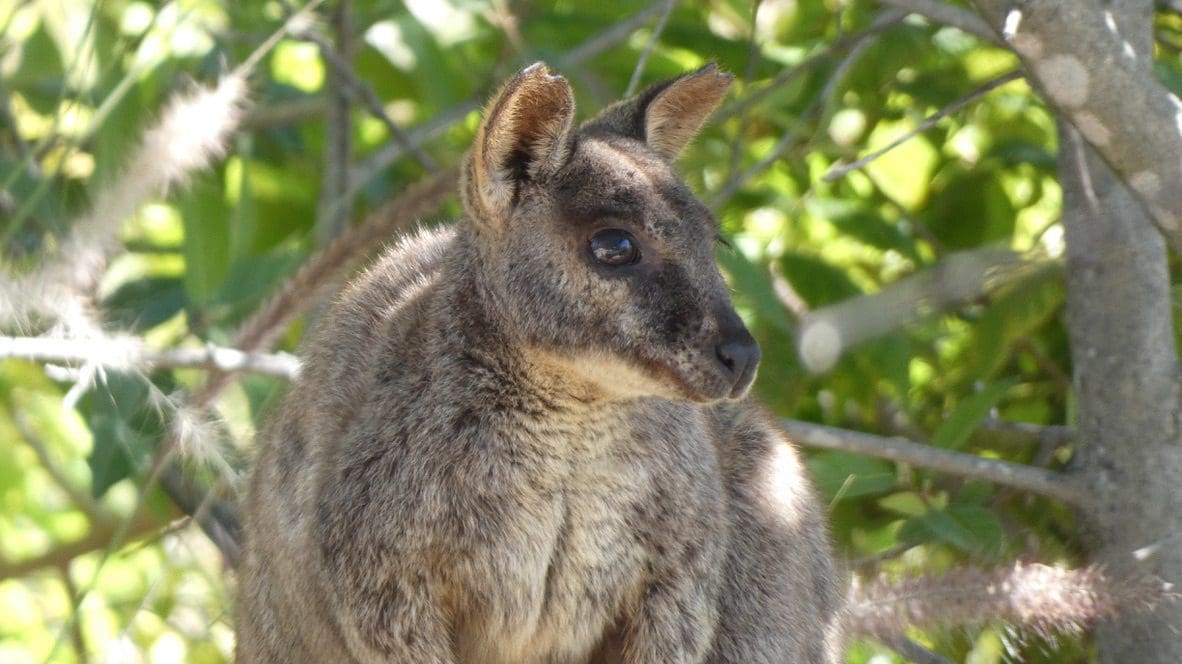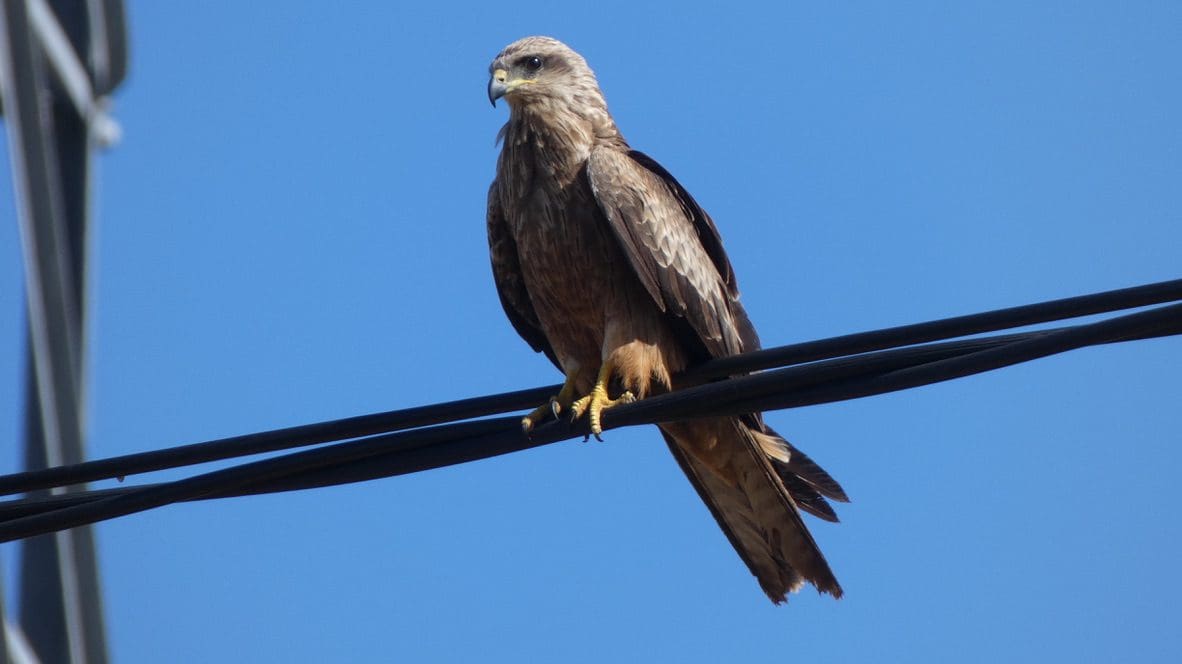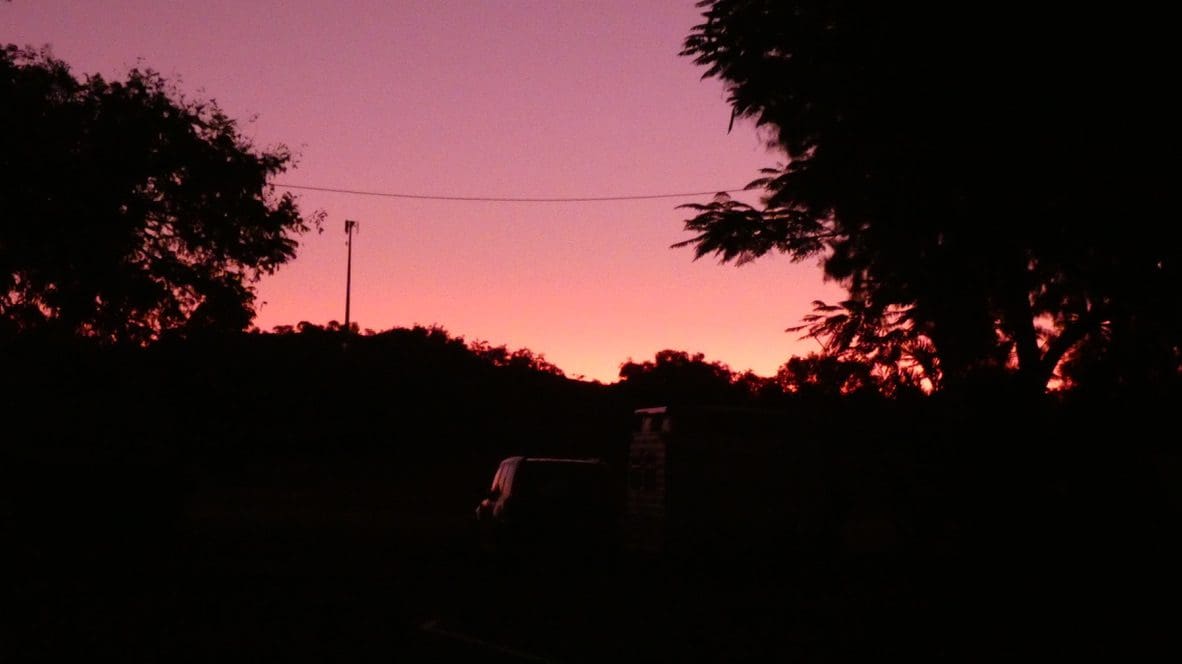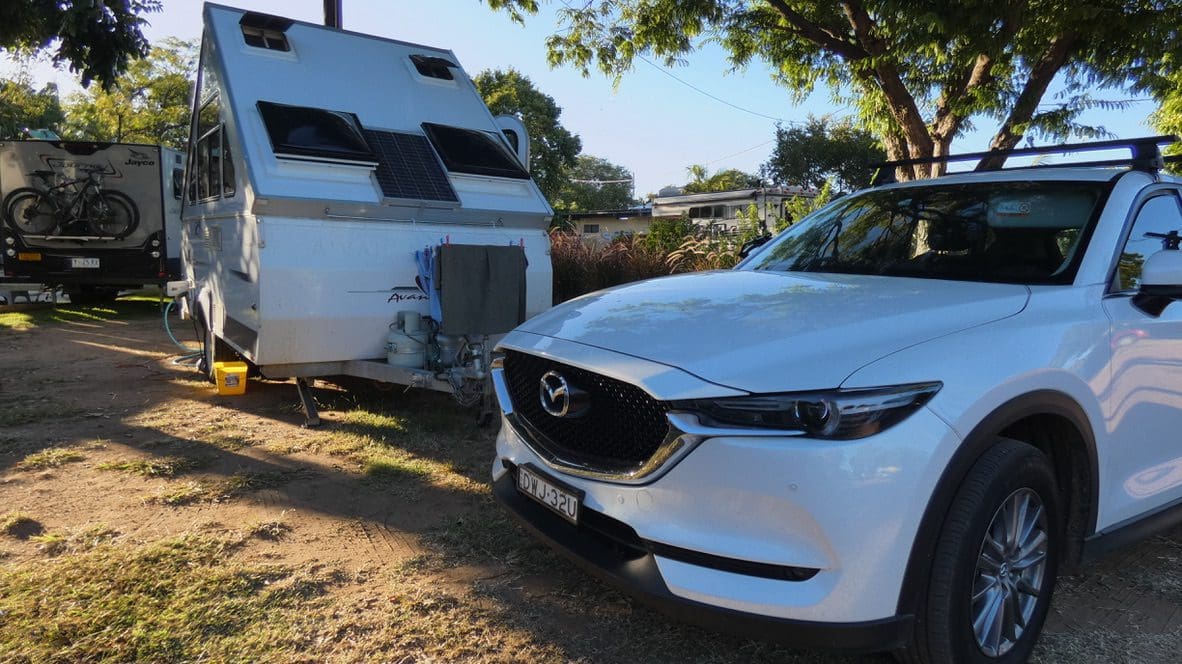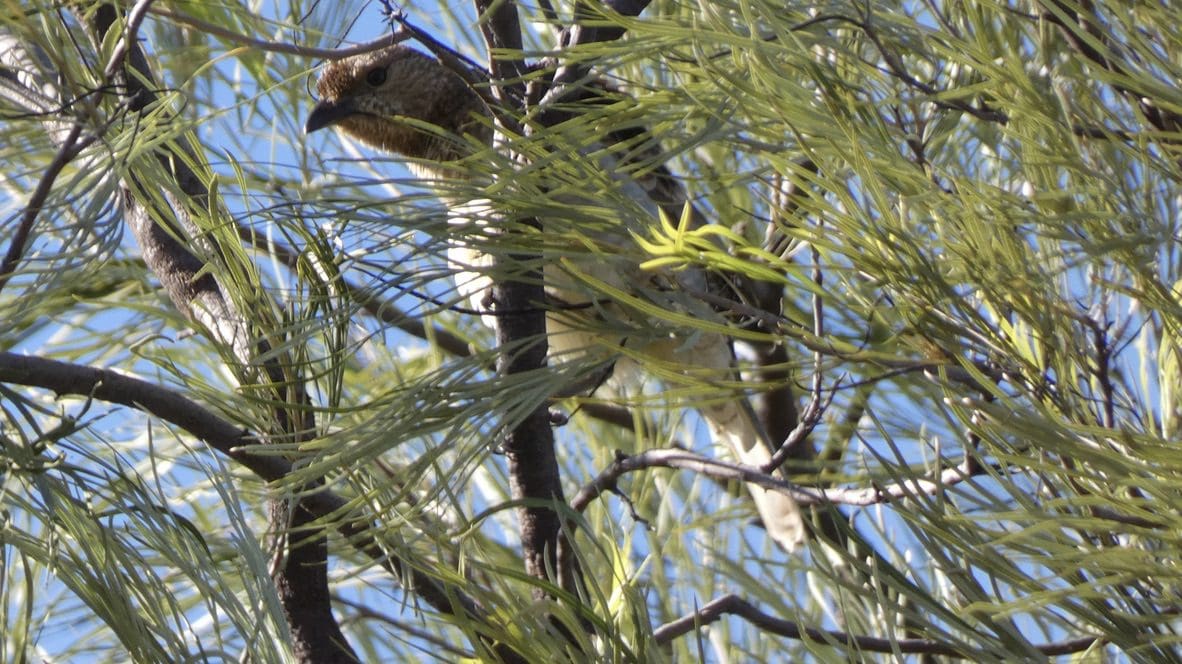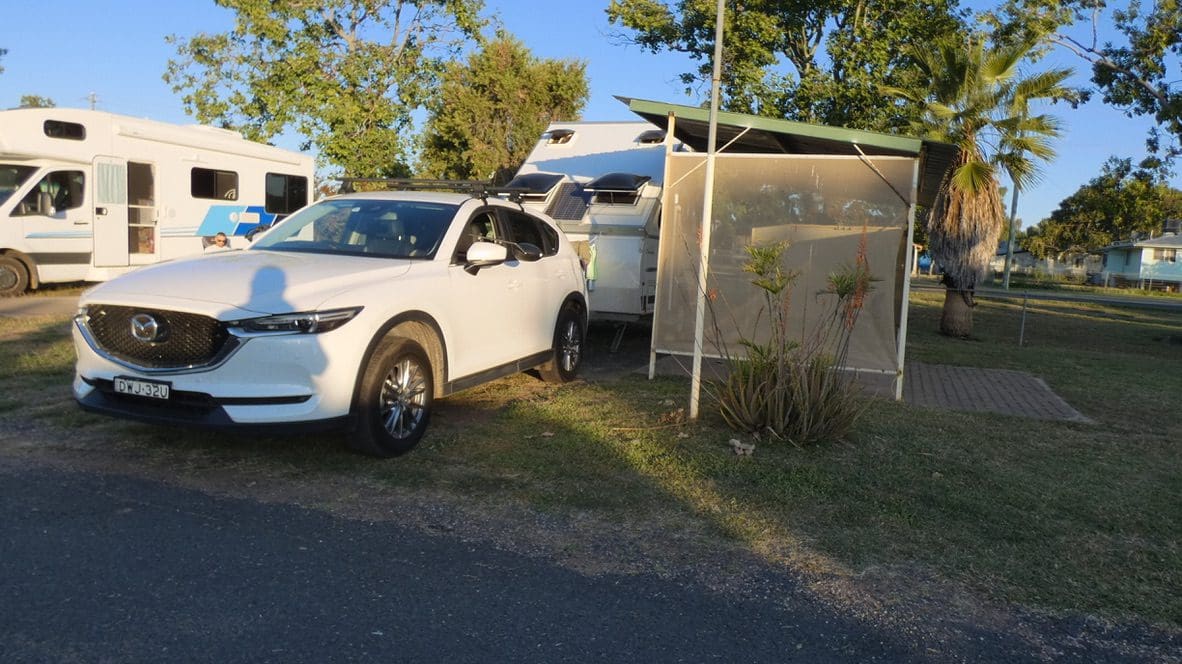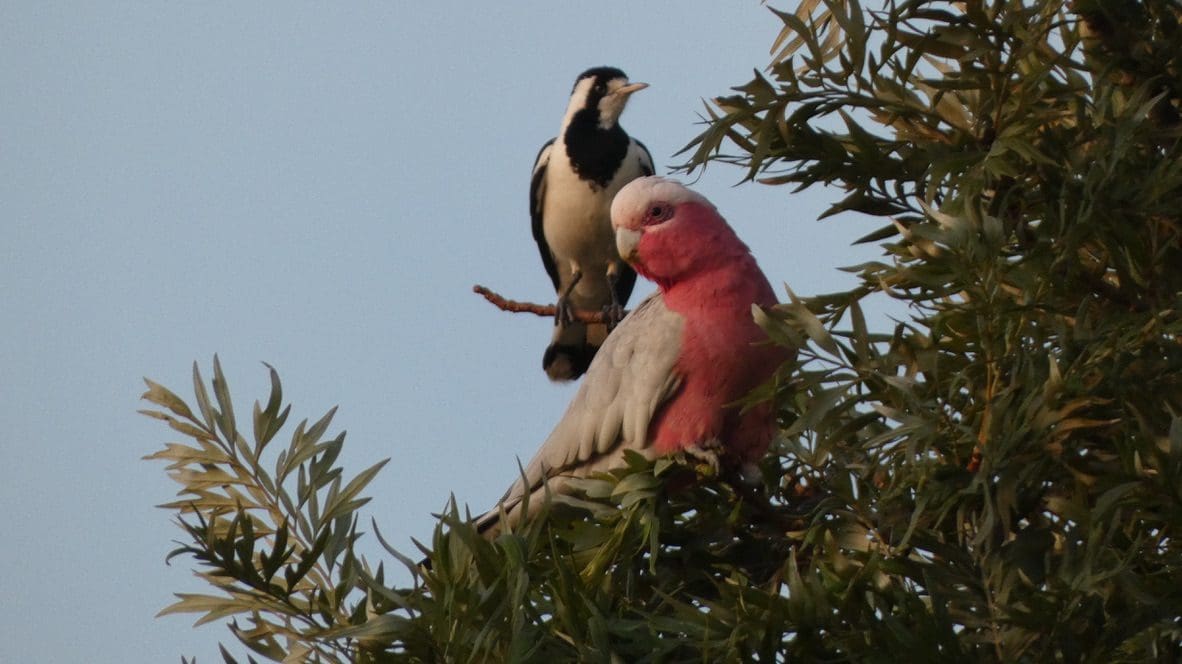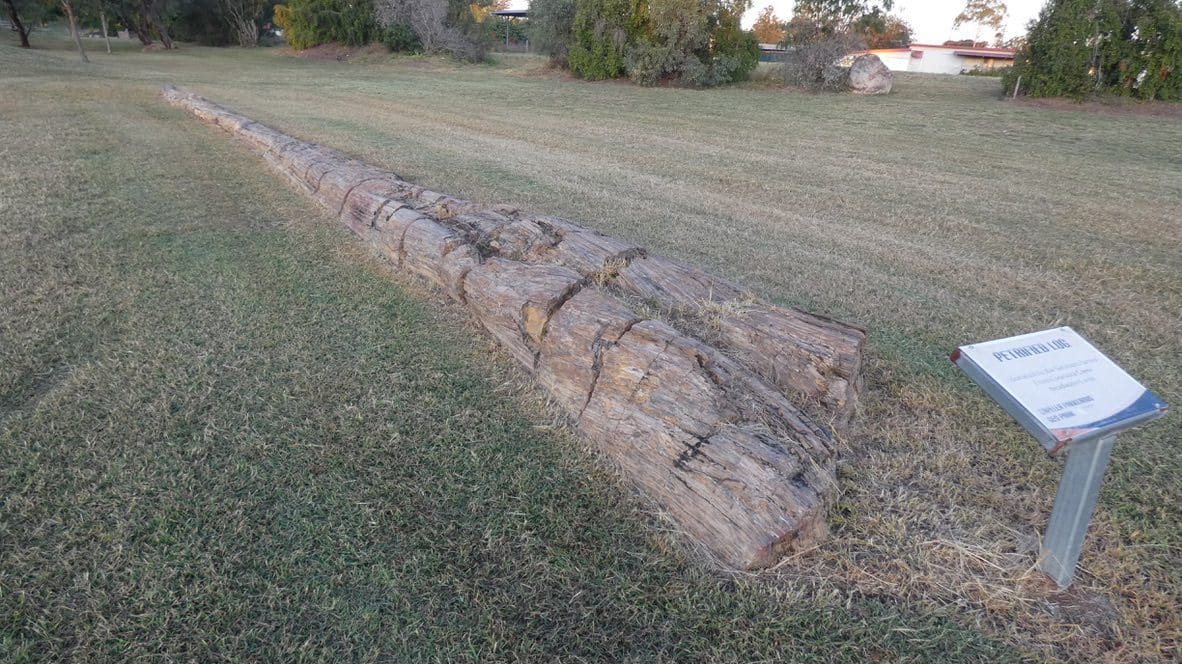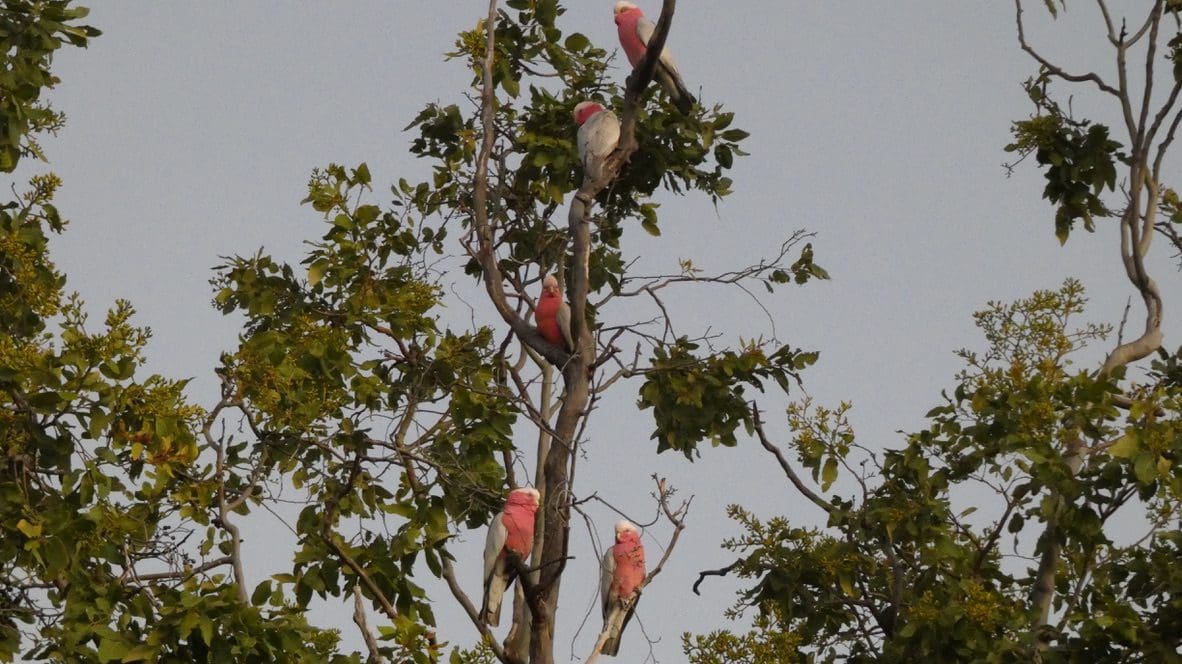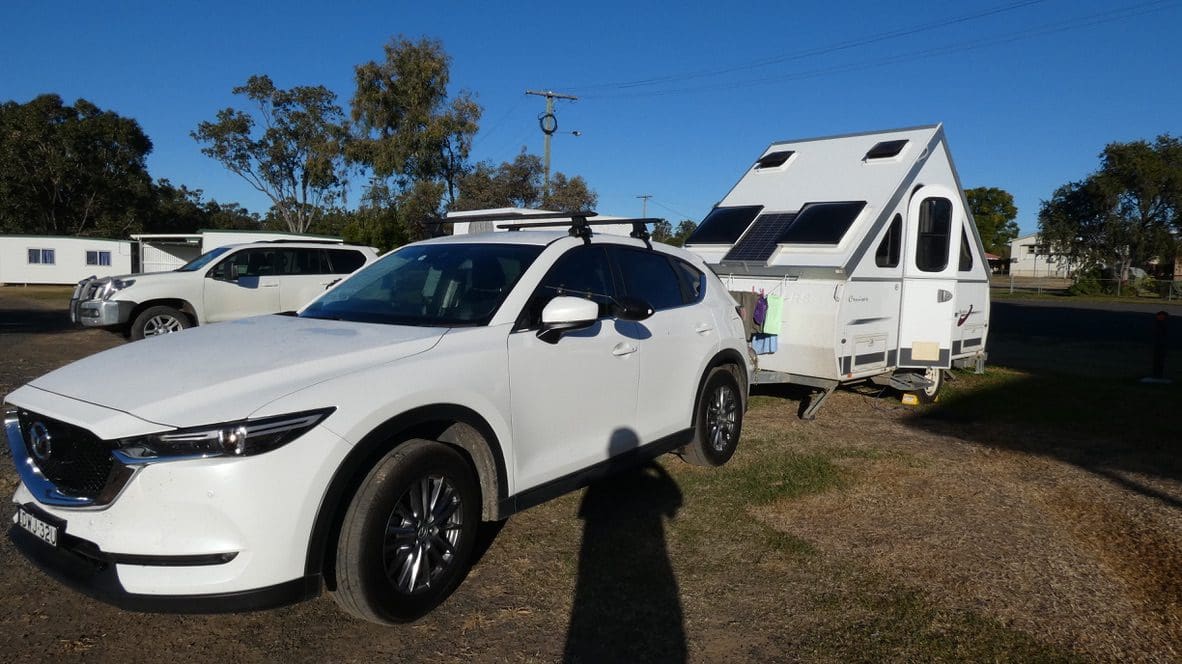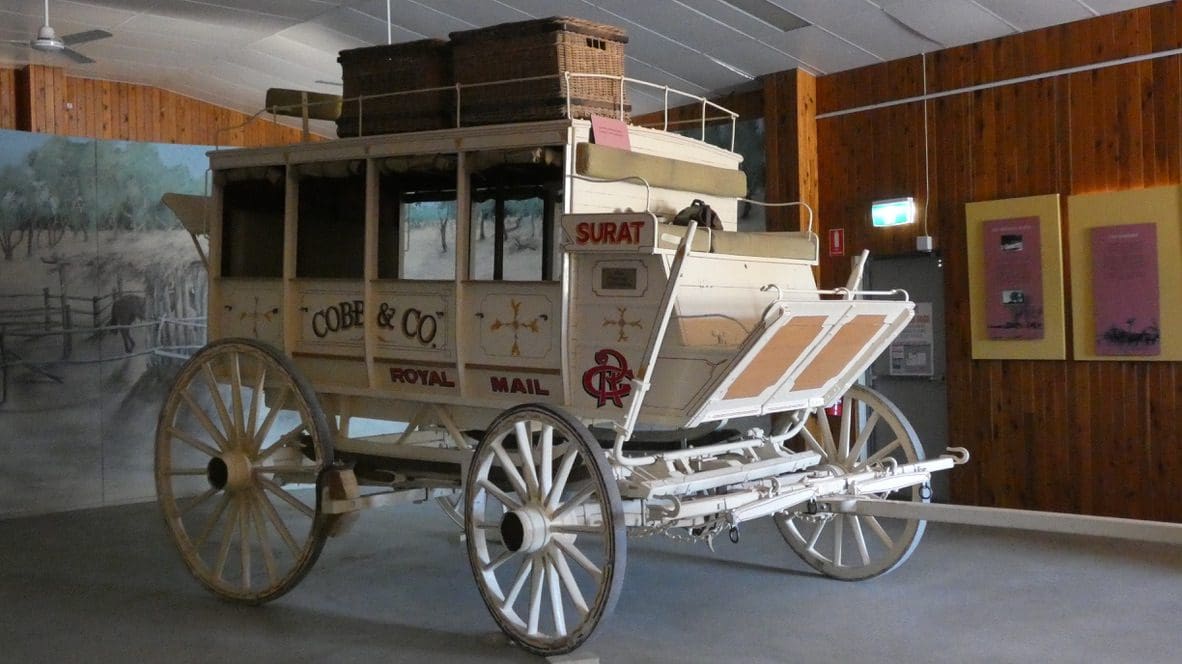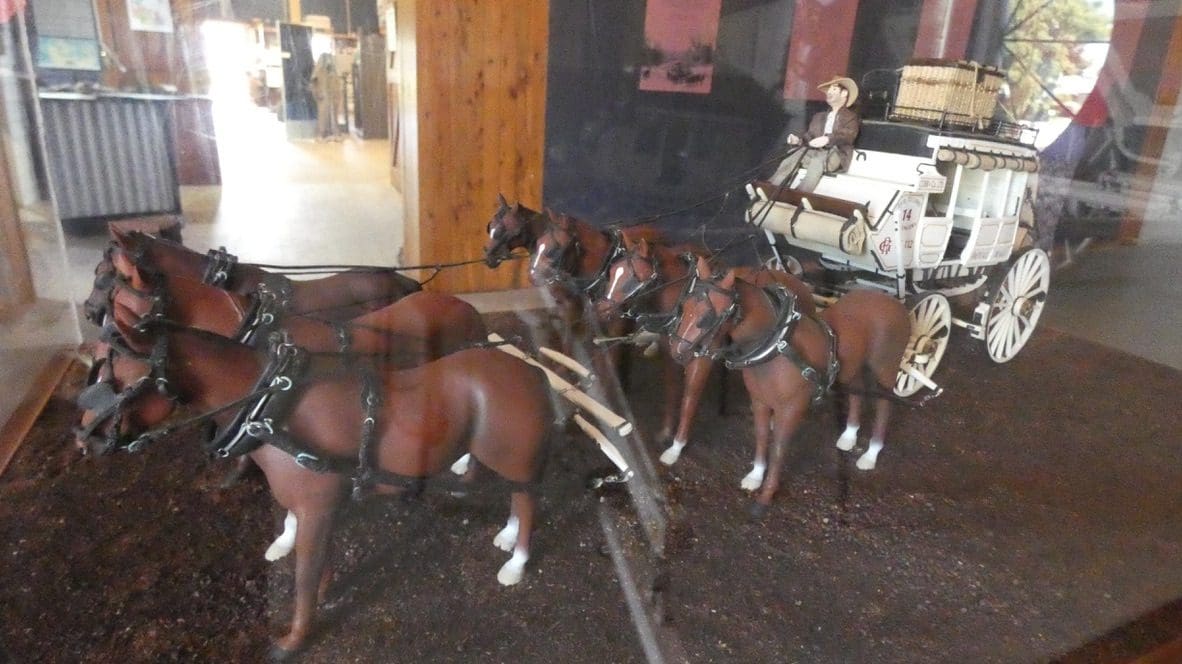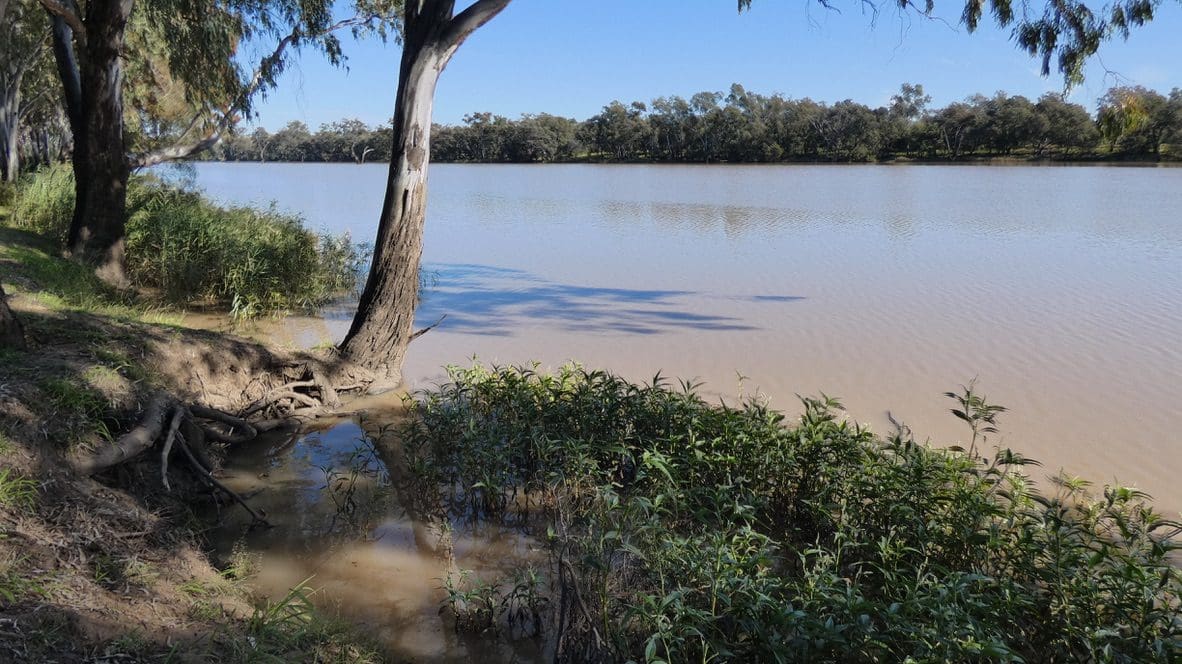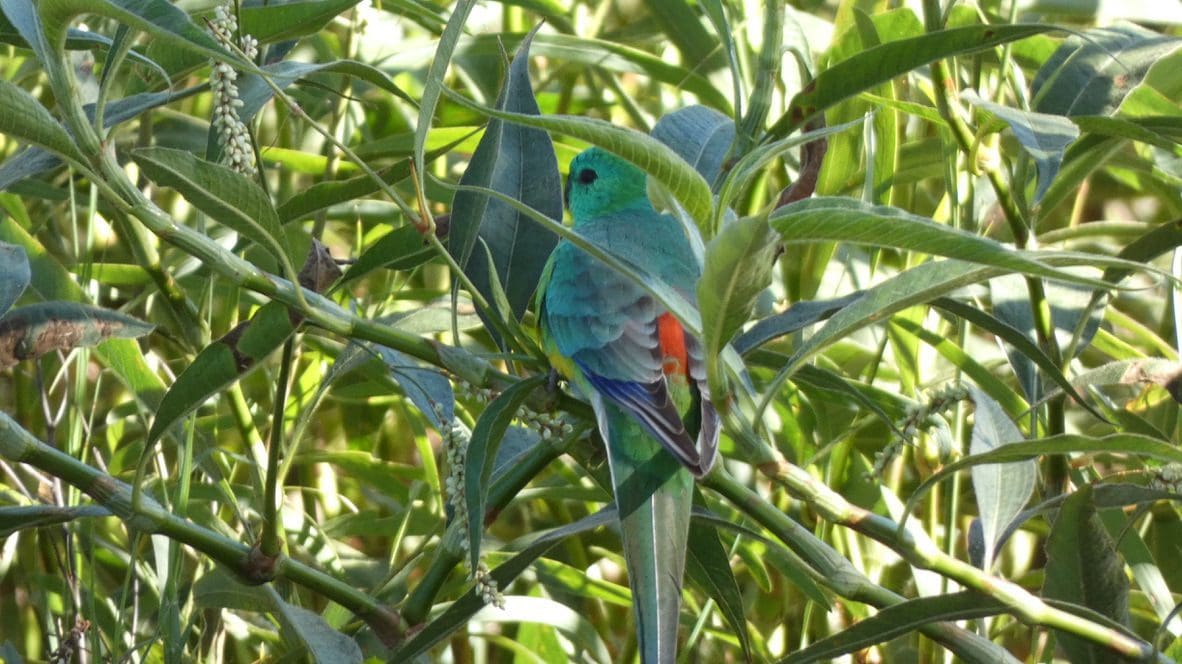Road Trip Queensland 2022 four
Day 39. Sunday 12 June 2022. A day that almost worked to clockwork. Up at 7am, packed and out of our room at Coral Tree Inn by 9:30am. At 10am our pick up was right on time and we arrived at our van storage place a few minutes later. (Pioneer Airport Car Storage 198 McCormack St.) Paid up, given our car key and driven to our van. All very good. My car key was flat. Used Helen’s key, shuffled boxes about between van and car and headed to Lake Placid Caravan Park where we could not get in until noon. Having to drive again was a bit of a shock. An Ironman was on in Cairns/Palm Cove today and roads were closed all over the place. Along the way, we stopped at a Woolies for food and a coffee. At our caravan park, we spent a couple of hours rearranging our gear for travel in the van. Quite a shift from the past two weeks.
Day 40. Monday 13 June 2022. Orange-footed scrub chook came and stood next to the van this morning. By the time I fiddled with camera and failed to get the lens cap off, it had decided not to be photographed and climbed back into the forest. No photo!!!@# They had yelled all night around the van. A very loud, penetrating call. Found a few day’s old dead adult Tawny Frogmouth next to our van.
Our drive up to our van park (Kuranda Rainforest Retreat) was only 35mins – although it was a bit of a drive. Quite a nice park. Wompoo Pigeon called in trees above our van. Could not see it. No photo!!@# We spent a fair bit of the day with Helen reading and me working on photos & blog.
Day 41. Tuesday 14 June 2022. At Kuranda. It was a bit cool overnight. We have both been very tired, dejected and wooly headed. After a short discussion, we realised that both of us would like to head home now. Neither of us wanted to go back up to Cape Tribulation – especially with the huge numbers of people tramping and driving like fiends through the place. A big thing for me is the loss of my bird photo camera. Although the Lumix FZ80 is excellent, it does not have the zoom and close in feel of the Nikon Coolpix P1000. I realised this morning when a catbird was calling, I did not even want to go to find it. By the early afternoon, I had cancelled our bookings for Cape Trib and made bookings for a return. During the morning, we had a walk around Kuranda village. This is a town that relies on tourists. It would have really felt the impact of COVID. There is little else here except souvenir and coffee shops. We had a walk though the bird display. It is very well done. A large open flight aviary with many species of parrots (many foreign), finches, water birds and a cassowary (which was partitioned off and had a collapsed head casque). Big warning at the ticket office to take off items of jewellery, caps, earrings and hearing aids as the birds nick them – which is true. The parrots do like to ride around on shoulders nibbling on ears. Very entertaining. After that, we headed for our coffee shop (Hideout). During afternoon worked on photos from Cape Trip. At about 5pm, a few Woompoo Pigeons called just above the van. I finally got photos – 3 – all terrible.
Day 42. Wednesday 15 June 2022. At Kuranda. Actually a day in Cairns. Our car needed a service, so I had booked it in for today. The service was to take 4½ hours because it involved a recall for something to do with its fuel pump. We decided we would spend the day at Cairns Botanic Garden and it was an excellent choice. They have set up an excellent display of tropical plants. The Gondwana Section appealed to me and we checked that out first before heading to the Conservatorium. Both are excellent. I especially liked the Conservatorium – which we visited twice. Excellent displays of the huge variety of shapes, forms, structure of leaves, structure of tree/shrub and reproduction methods amongst plants. Everything that works for plants to live, flourish and breed has been tried. About the only thing plants as a whole have in common is using photosynthesis. They have been around for a long time (400 million years) to achieve this amazing diversity. A very good day. I really uncovered the weakness of the Lumix FZ80 for photographing birds. Its automatic focus focuses on any vegetation that might be vaguely in front of the bird, so the bird itself is out of focus. The Nikon P1000 moves to a ‘point’ focus when ‘birds’ is chosen as a shooting mode. I’m attempting to find a work-around.
Day 43. Thursday 16 June 2022. At Kuranda. In the morning, a wander around Kuranda markets. What can I say – incense and tie-died, a rash of green tea shops. Coffee at Hideout and a disappointing Pho at Vietnamese shop in Market. Working on trip photos – chucking those out-of-focus, identifying birds, identifying locations, sorting what to include in photo galleries. This van park is quite old and built when vans were smaller. The very large vans have difficulty backing into slots and getting out. No through roads, so vans have to be turned around – 50-point turns. Woompoo Pigeon called again today. It has called every evening between 5 and 5:30pm – just 4-5 calls.
Day 44. Friday 17 June 2022. Kuranda to Atherton. We are on our way back. Today we drove just 69km from Kuranda to Atherton. We are back at the same Vanpark we were at a few weeks ago. Uneventful drive. The rainforest of Kuranda quickly disappeared and we were on straight roads through savannah. A huge amount of roadworks – almost all the way from Mareeba to Atherton. Quite a few birds here. I saw a black headed Grey Fantail (race keasti), Lewin Honeyeater and a rufous breasted shrike-thrush (Bower’s or Little?). No photos. The White-cheeked Honeyeater’s nest we saw being built as we left last time has 2 little birds in it. A long sleep this afternoon. Beginning to feel less ‘foggy’. Pizza van in Vanpark at site 61 – Pizza for tea.
Day 45. Saturday 18 June 2022. At Atherton. I’ve noticed the plethora of road signs with ‘Far North Queensland’ on them. It looks like first steps to cessation. I’m unclear where the state boundary would be. For many years, I joked that it might be at the Tropic – ‘tear off at dotted line’. I think it might now be further north. Townsville?
Over to Kuranda where their monthly Saturday market is on again – bought Bromeliads, custard apples and red pawpaws. Bliss. Stopped at Hasties Swamp National Park on the way back. The usual hordes of Plumed Whistling-ducks. Helen washes the sheets. Greek food van in site 61 tonight. Regular food vans in site 61 make this park extremely good.
Day 46. Sunday 19 June 2022. At Atherton. A day off. Washing and food shopping. This is a very nice park to sit in. Sites are spread out. Quite a lot of vegetation. And, most important, quite a lot of birds. We think that every vanpark should have a ‘Sean’. Sean guides all incoming vans/motorhomes to their sites. He tears around on his electric bike – Smarcycle – that he says is the best he has had. He has worn out 4 other brands before this. Always cheerful. We think that he helps make this vanpark (NRMA Atherton) excellent++. This is a very good vanpark. Quite cool overnight.
Day 47. Monday 20 June 2022. Drive 240km to Ingham. Yes, we’ve headed back to the coast as a slightly shorter (and much easier) way to get to Charters Towers. We had a morning of mizzle as we left Atherton. The drive down the range from Millaa Millaa was very easy and then we joined a procession of slow vans and trucks heading south on the Bruce Highway. Stopped at Cardwell beachfront for a coffee. It is an excellent place for a stop. At Ingham, we sought out an Italian lunch place. Harder than you might think. Maybe Italian families in Ingham eat in. We eventually found JK’s Delicatessen and Café. Delicatessen excellent. On 3 km to Ingham Tourist Park for the night. Cleanest and newest toilet/shower block I’ve very seen. On dusk, hordes of screaming Rainbow Lorikeets settled and squabbled in the palms and trees above us. Noisy!!! A few trains during the night.
Day 48. Tuesday 21 June 2022. Drive 240 km to Charters Towers. Quite a lot of road work just north of Townsville. Much northbound traffic. On the road up from Townsville, we crossed into the Burdekin Basin. We are staying at Dalrymple Vanpark. Very full tonight. This afternoon, we went in to the Tourist Information Centre and walked around the old historic buildings in the centre of town. Back in the day, this was a very rich and prosperous place that called itself ‘The World’. Now, the once city of Charters Towers is more a ghost town.
This vanpark was full overnight. Rumours of new long, popout vans being unable to get into many parks. We certainly seen that the long vans are sometimes extremely difficult to get in. Lake Placid vanpark used a tractor to park long vans.
Day 49. Wednesday 22 June 2022. At Charters Towers. A quiet day. My father was born and went to school here. He was an excellent athlete and his school athletic records maybe still stand. I had intended to spend time checking this out. The school did not reply to my requests. The library does not hold records other than those that I can find online.
This morning, washing and shopping. While in town, we walked to the Miners Cottage. Helen took one look, declared ‘collection of old junk’ and stomped out. I agree. We were hoping for a museum like exhibit. Instead we found piles of old junk piled into rooms which may have once been a museum – looking like a hoarder has been cramming the place with all available junk. Disappointed. Morning tea at ‘Stock Exchange Café’ located in the old Stock Exchange.
After lunch, we did part of the self-drive tour around Charters Towers. Interesting enough. Much we had seen before on previous trips here. It certainly was a thriving and rich town. A highlight for me were the rock wallabies at the top of the lookout on Tower Hill. When I returned the tour audio, the woman in the Information centre said the town is completely booked. Last night, the only room available was at Hughenden (2 hours west). All vanparks are full and they have opened the showground to caravans, motorhomes and campers. ‘Where are these people from and why are they all on the road now?’
Day 50. Thursday 23 June 2022. Drive 424km from Charters Towers to Capella. Got underway in just 1:15hr. Getting a bit cooler in the morning – 9ºC. Day time temps at 25ºC. We are certainly on our way back now. An uneventful drive – just long. The road is quite damaged by recent flooding and very rough and bouncy in stretches of up to 12km at a time. Stopped at Belyando Crossing to add 12 litres of fuel ($2.49 a litre). The Belyando River is the major tributary of the Burdekin River. We got to Clermont with just 100km on board. So, we needed that top up. Filled up at Clermont. About Clermont, we finally left the Burdekin Catchment and we have crossed into the Fitzroy River coastal catchment. We are at the nice little vanpark at Capella – very practical and clean amenities. Capella has certainly shrunk in size since it was a drive-in village for local coal mines. Bowling club, donga villages are all gone. The huge cultural centre and swimming pool still there but very vacant. A ghost town getting started.
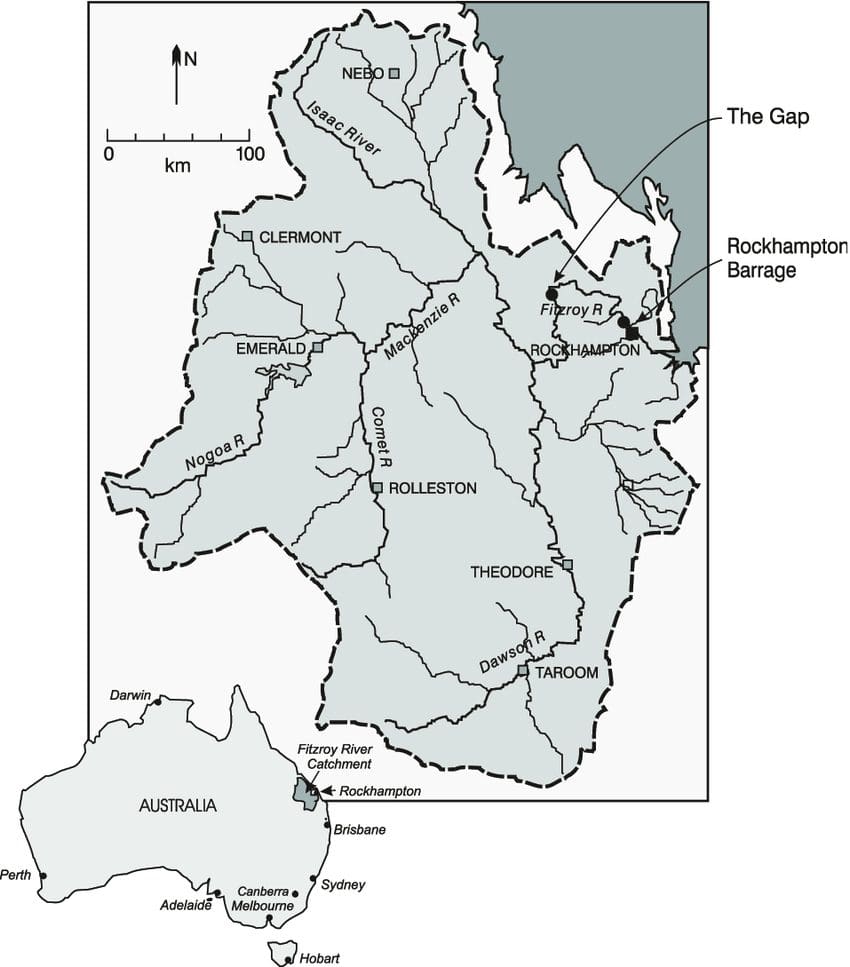
Day 51. Friday 24 June 2022. Drive 366km from Capella to Injune. 5ºC this morning. An uneventful drive. Quite a few vans heading north. Helen estimates more that 300. Where will they fit? Vanparks north are already full. At Injune, we are in what was a donga park with a huge kitchen and gang of chefs cooking for a lot of people. That is all gone now. A few years ago, Injune was a centre for gas exploration. Now, it is another dying town heading for ghost status. Watch this space. Injune vanpark is a prickle patch worthy of note.
Day 52. Saturday 25 June 2022. A bit cool this morning – 0ºC (feels like -2.1ºC). Certainly well south of the tropic now. Delightful sunny days with a temp to 23ºC. A few very high cirrus clouds. Let’s see what they bring. Drove 284km to St George. Uneventful. Helen counted 62 van heading north in the first 100km that we drove. That will add up to a lot of vans arriving at Charters Towers in a few days. Does Charters Towers know they are coming? Stopped at Surat for a coffee and a visit to the excellent little local museum in an old Cobb & Co changing stop. Surat looks to be just holding its own. Tonight we are in the Pelican Rest vanpark at St George. St George looks much more run down than when we last stopped here. Has something happened with cotton prices? There is a big music festival here this weekend. Maybe all locals have left town. Getting fuel on a Saturday afternoon proved to be not simple. Mixed flocks of Great, Little and Pied Cormorants flying over.
Day 53. Sunday 26 June 2022. Day at St George. 4ºC to 20ºC. This morning, we walked along the ‘Riverside Walking Track’. Flood height sign was very interesting. Cyclone Yasi in 2011 delivered a huge flood. 2012 saw an even bigger flood and 2,000 people evacuated from St George.
The Balonne River is the lifeblood of this agricultural community and its ebbs and flows have a major impact on the people who live and work here.
The region experienced major flood events in 1950,1956, 1975, twice in 1983, 1996, 2010, twice in 2011 and 2012. All of the heights of the water level are recorded on the flood height marker situated on the Balonne River down from the information Centre.
Helen went to do the washing and found that one of the three washing machines had broken down and mayhem had broken out in the vanpark laundry. Laundry resources are always too little and washing machines are a bottleneck. A very common problem in many parks. “A women’s problem. No action needed.” I’ve never seen it covered in a review.
Day 54. Monday 27 June 2022. Drive 345km to Narrabri. Temp not to bad overnight. Beautiful clear sky all day. 18ºC max. A busy day on the road. First through cotton country with b-doubles loaded with 9 huge bales. Bales stacked in 9s around the edges of fields from where they were picked. That went on for about 80km south of St George. From there to the border, it was unfenced sheep country. The Moonie River was way below road level. This was the crossing that caused us to divert through Goondiwindi. With that road now open, very large numbers of large trucks thundering north along with hoards of large vans. Not far after the border, large acre grain was being trucked to its central silos to wait for its train. At one small siding, Helen counted 13 grain trucks lined up to drop their grain. I note that last year’s grain is not yet all cleared. These days there is far more grain than will fit in the silos. Now, is is kept under huge blue tarps. From Moore onwards, road traffic just got busier. Worth mentioning that although this is a major trucking route and a road heavily used to transport grain and cotton, it is in very bad condition. Not just the surface, which could be excused because of recent floods. It is all the narrow bridges that are not wide enough for a van and truck to pass. A dangerous road. Tonight, we are at the Big Sky vanpark in Narrabri. Helen had a good giggle when a brand new van pulled in next to us, set up and then moved to another slot because there was a tree nearby. A fair bit to learn.
Day 55. Tuesday 28 June 2022. Drive 348km to Peak Hill. A bit cool this morning 4ºC. Cloudless sky. Another uneventful drive. Quite a lot of traffic – mainly characterised by a lumbering van followed by a line of cars including a few trucks. We stopped at Coonabarabran for fuel and a coffee. A long drive. We are at Double D Vanpark at Peak Hill in the exactly the same slot we were in June last year.
Day 56. Wednesday 29 June. Drive 350km to Wagga and home. A mildish morning with a light cloud cover. What should have been an uneventful drive, became complicated when the satnav overrode my route choice and I did not stick to what I wanted. Instead of a simple drive from Forbes to West Wyalong, we had a complicated drive with winding, narrow roads straight south – and us trying to avoid dirt roads. What a mistaka to maka. We needed lunch at Temora to recover. Temora has managed to plant trees so that it is very difficult to park a van. Anyway, arrived home in early afternoon and began unpacking. The washing machine did not stop for 2 days.
Summary. We drove 3,000km up and 3,000km back. The tour was 3,200km. An awfully long way. Was it worth it? The Cape tour was excellent and we got a lot out of it. The drive up and back was a drag – especially the drive back. We’ve arrived back very tired and slightly disoriented. Gradually recovering. I doubt that we will undertake such long drives again. Certainly a change from a few years ago when longer distances were considered easy. Another thing that has happened is that we have seen it before. We have driven inland Queensland 3, 4 and sometimes even 5 times. We have been to all the museums. There is little new for us. And ‘new’ certainly counts. The first time we see something it might be interesting. That interest disappears fairly quickly. The saying ‘take all your photos the first day’ is right. By the second day, all is ho hum and hardly noticeable let alone picture worthy. I’ve also discovered that the main reason I am now travelling is to photograph birds. After my Nikon P1000 was disabled, I was left without a reason for travel. I found it impossible to maintain my diet – especially on the tour. I gained 2kg while away. Back on the diet now.
